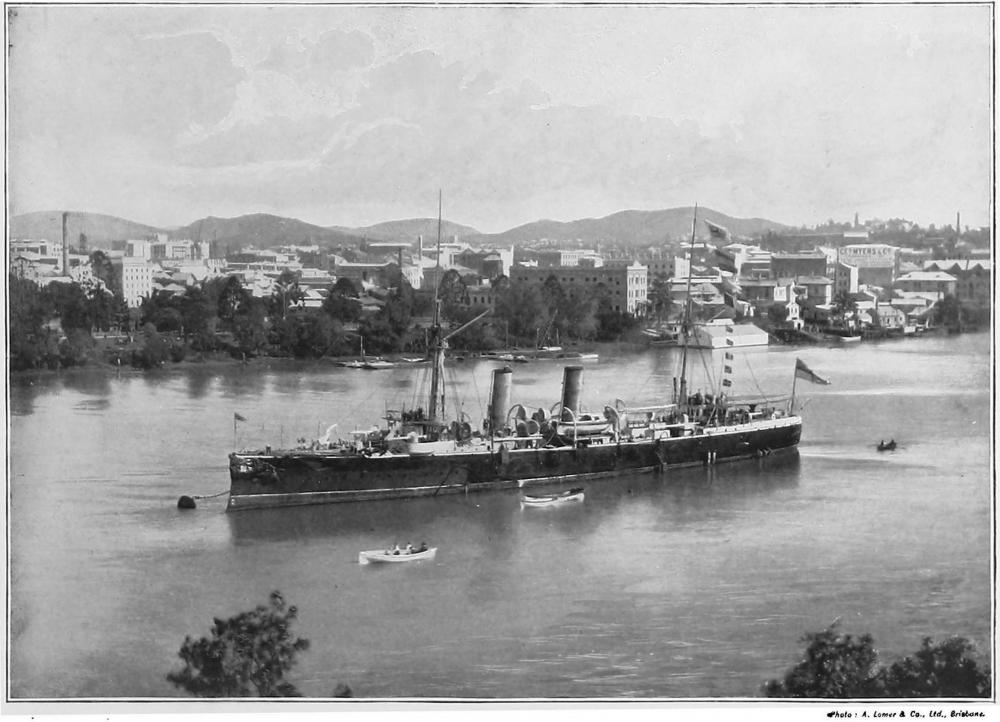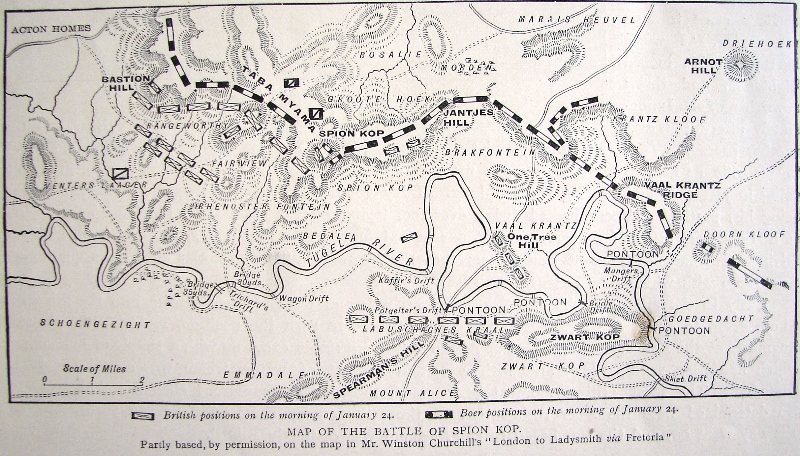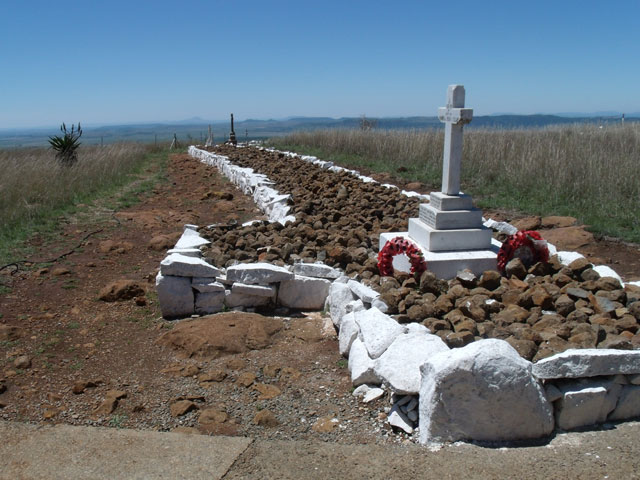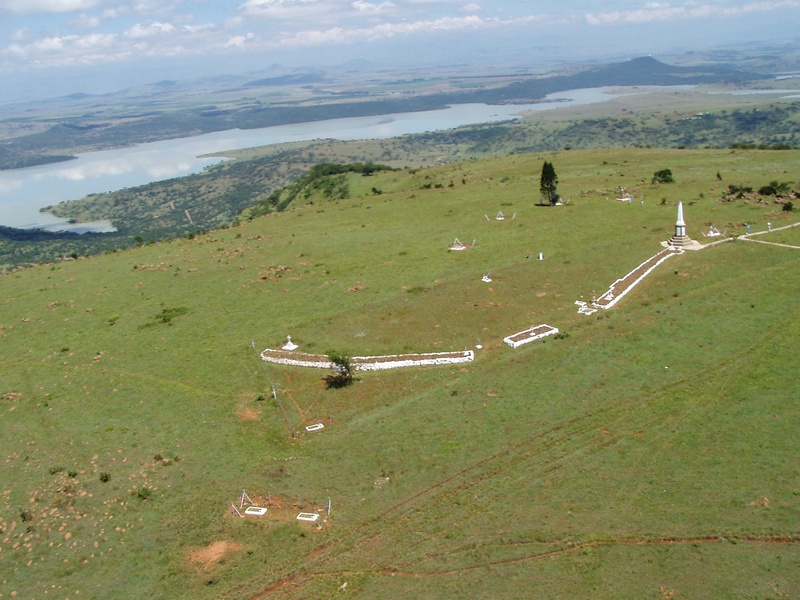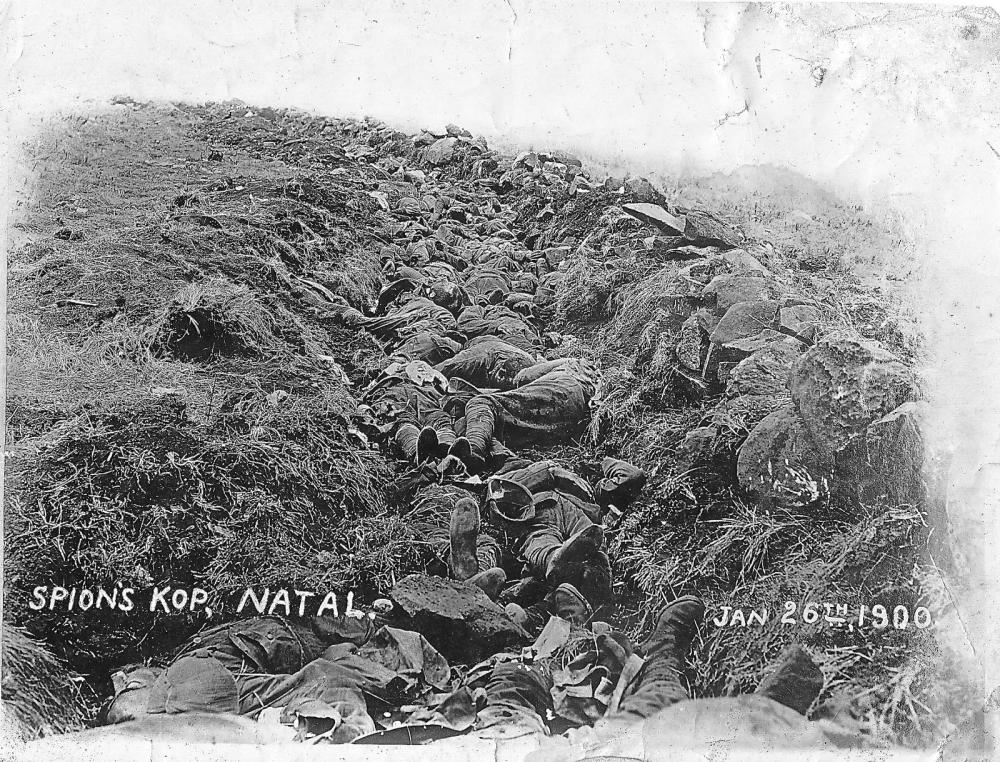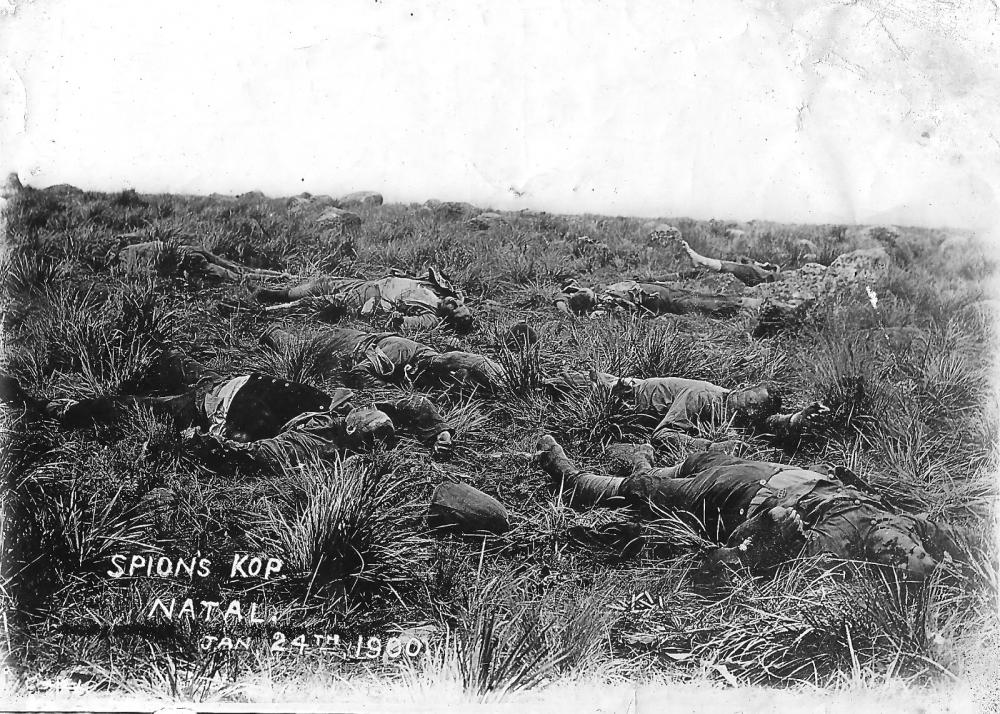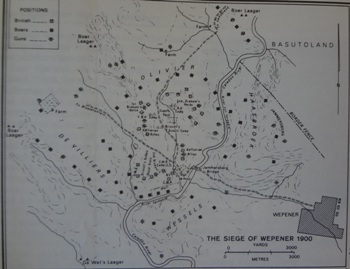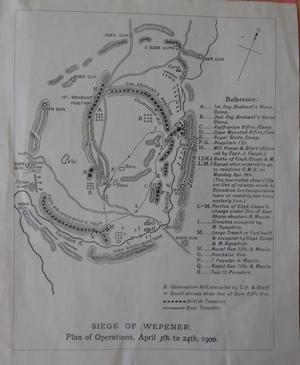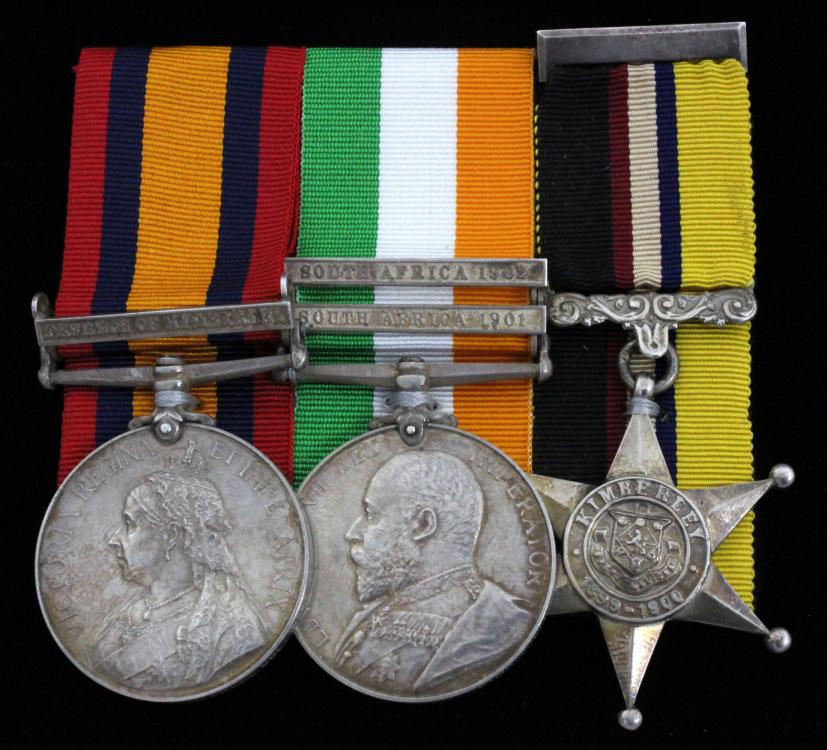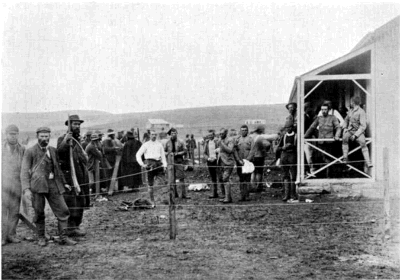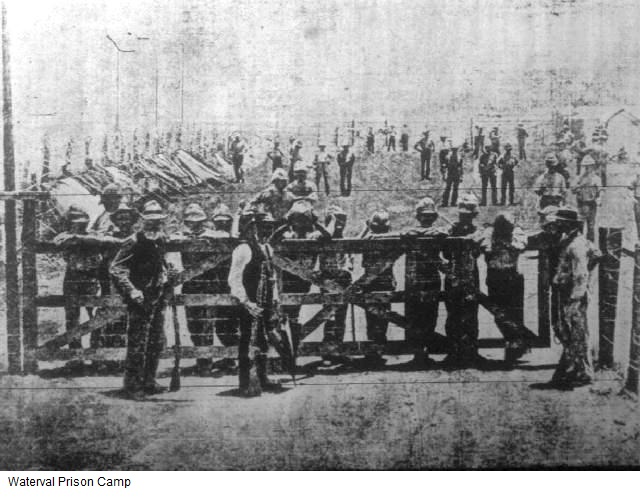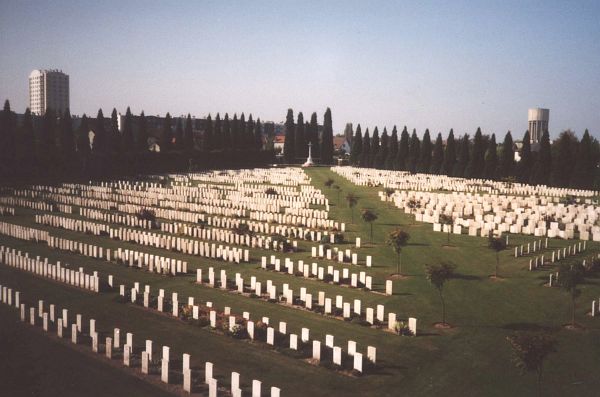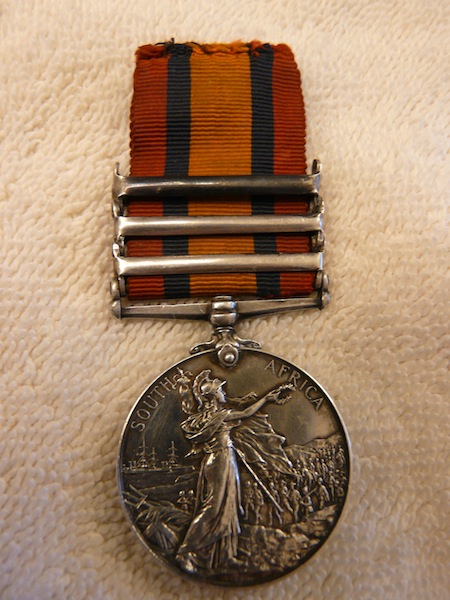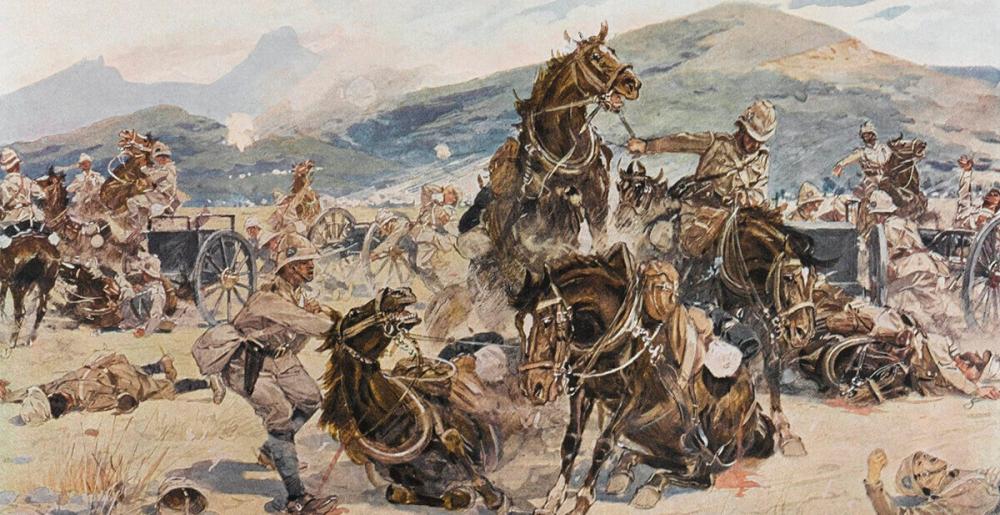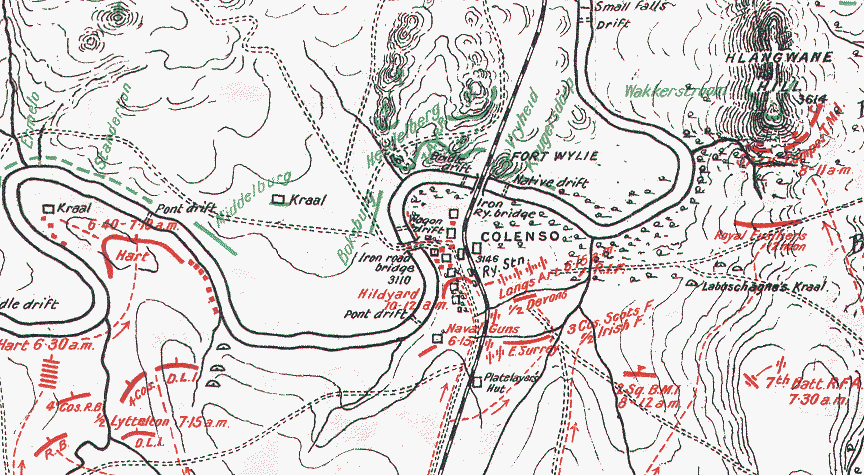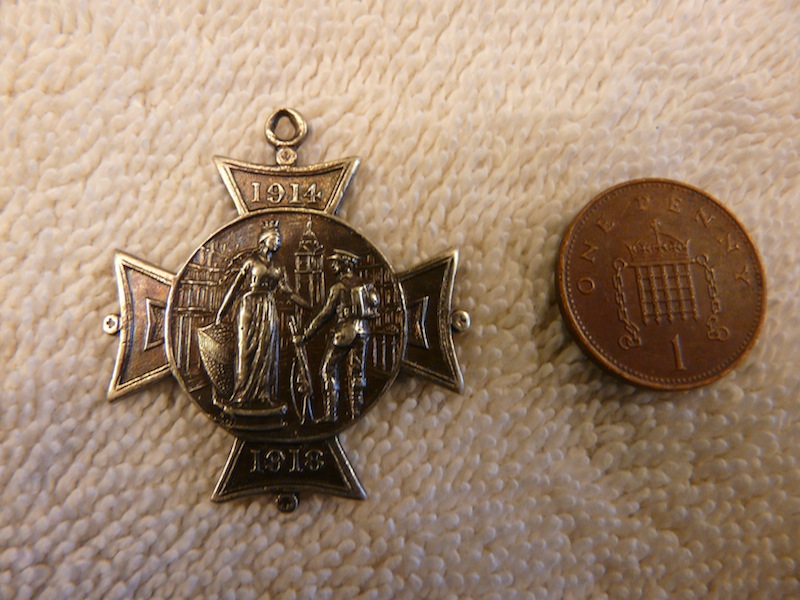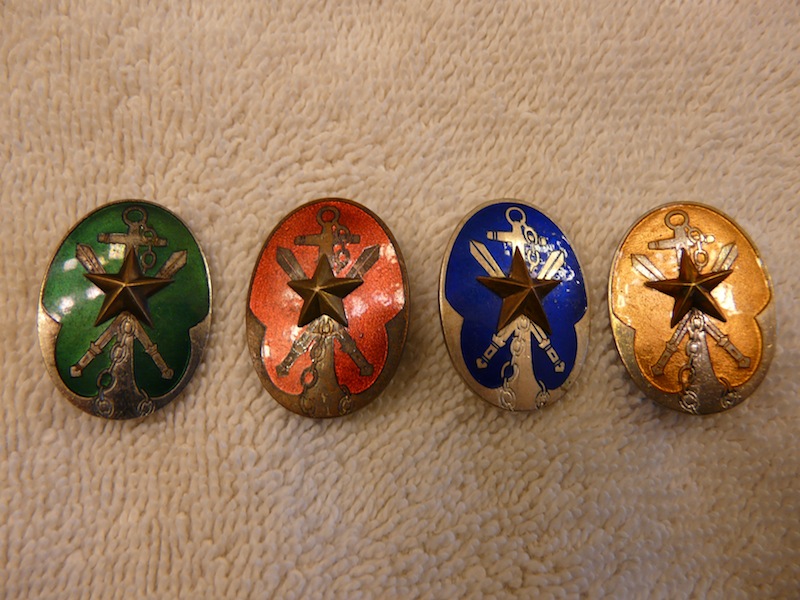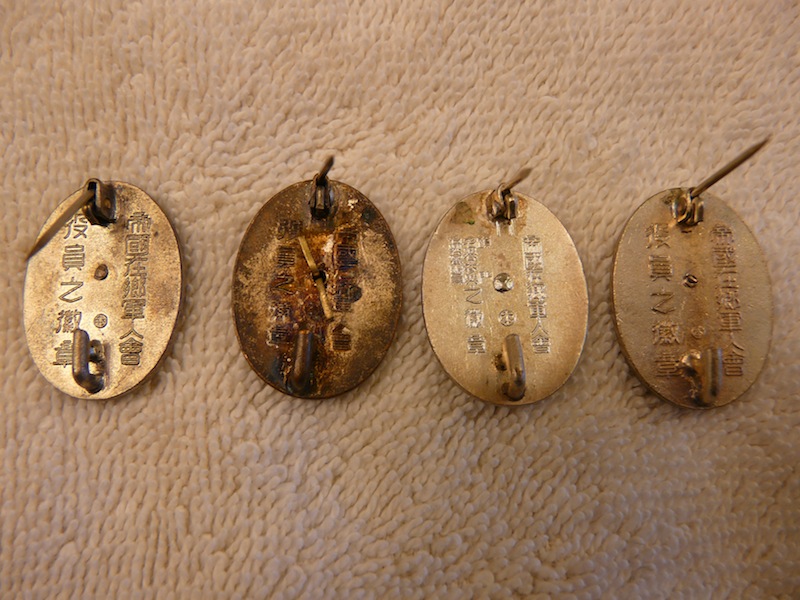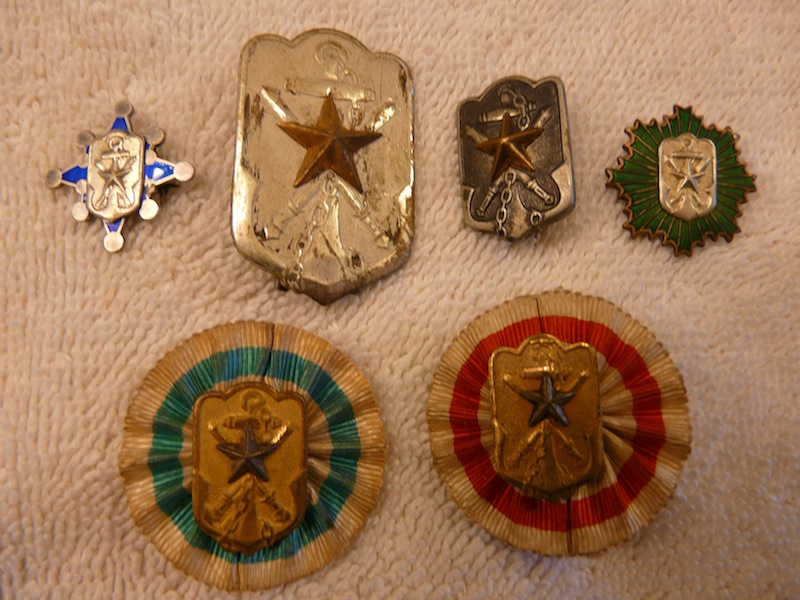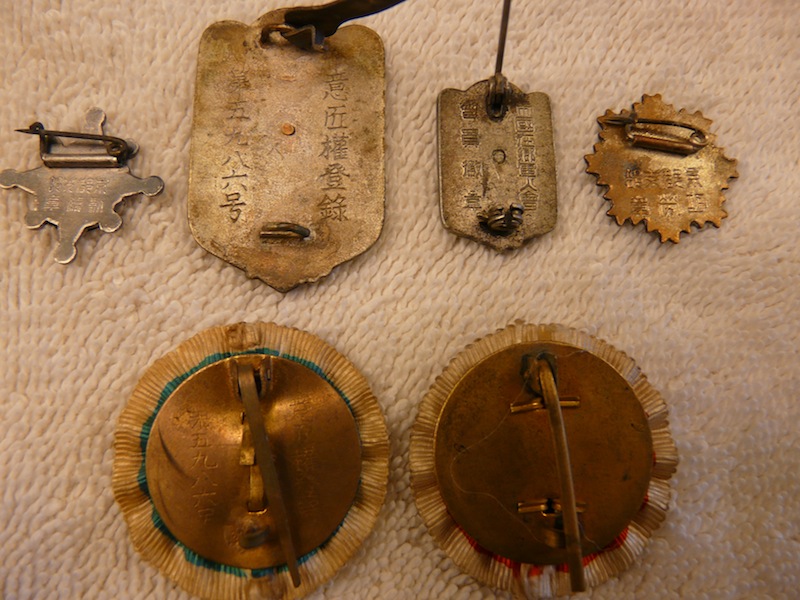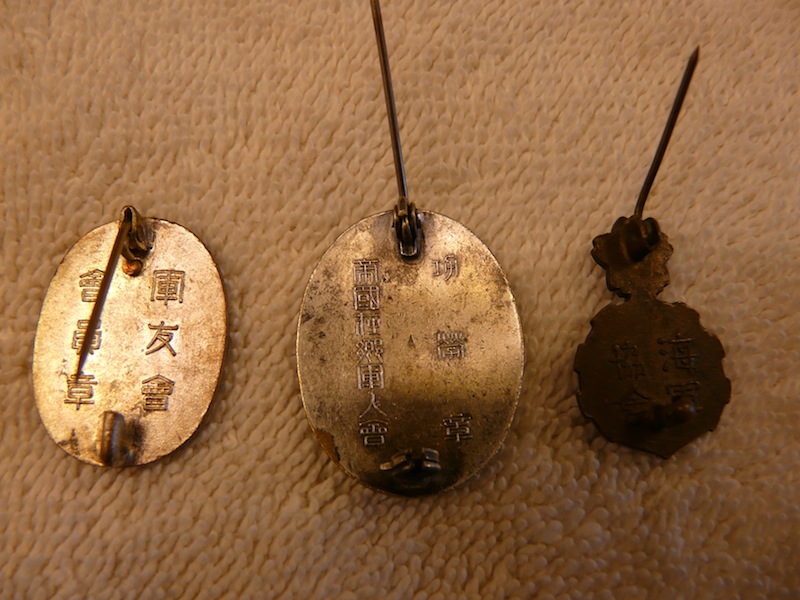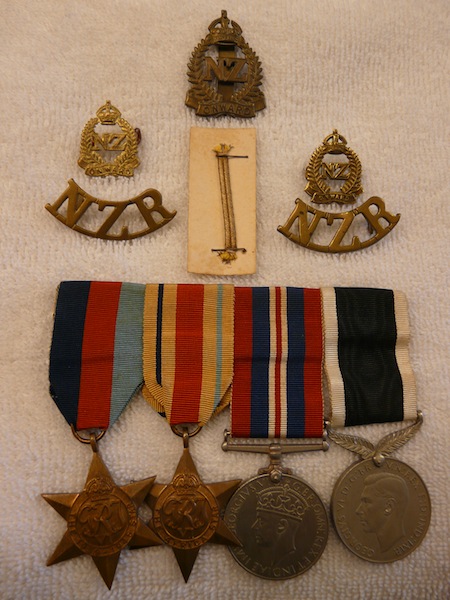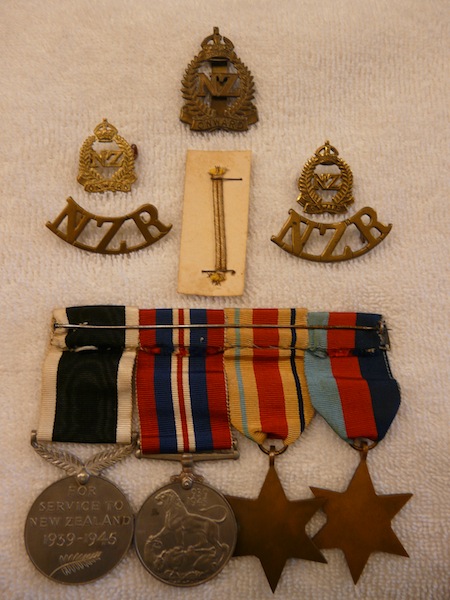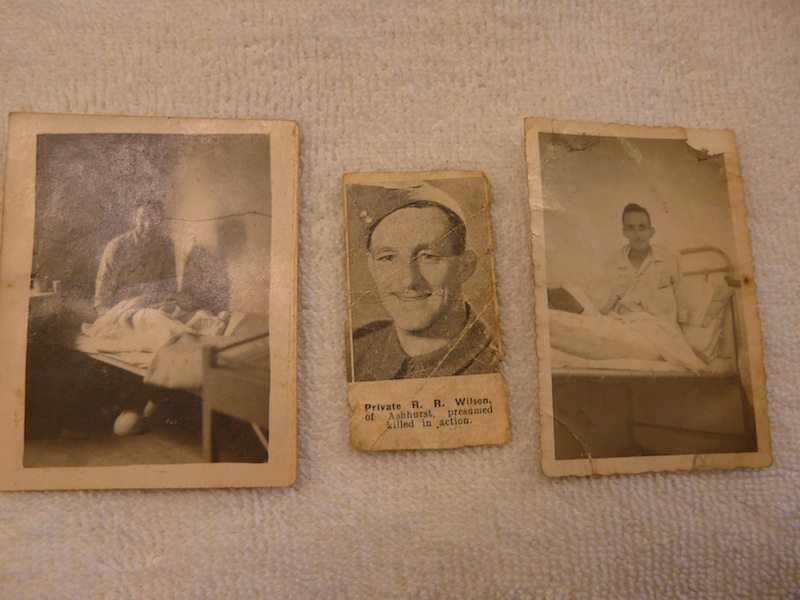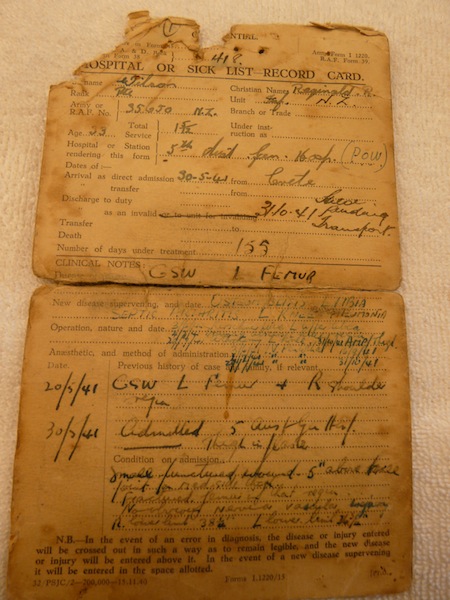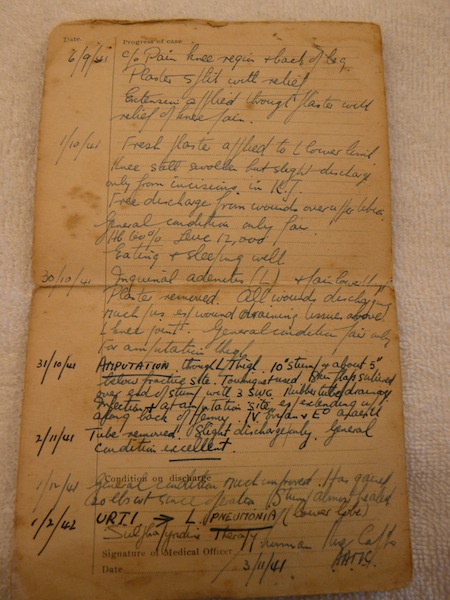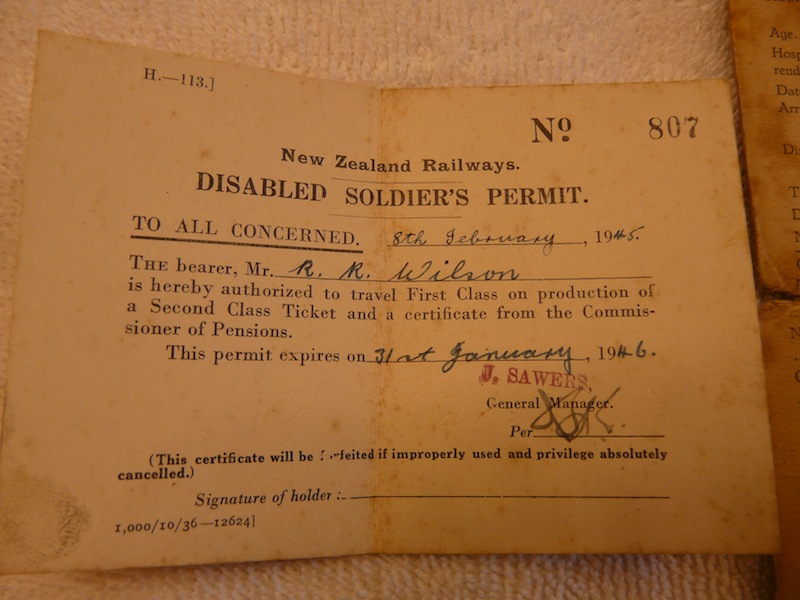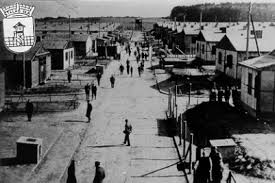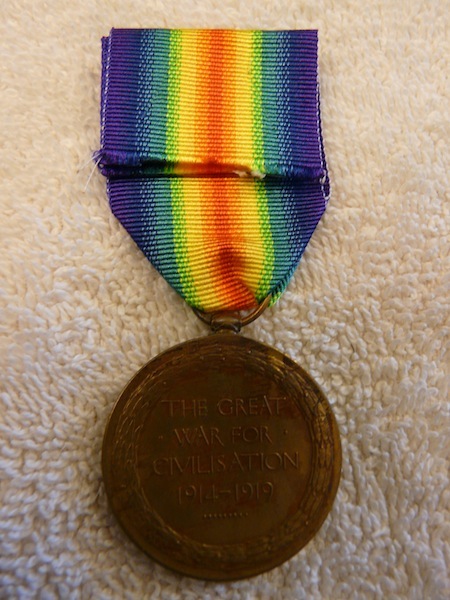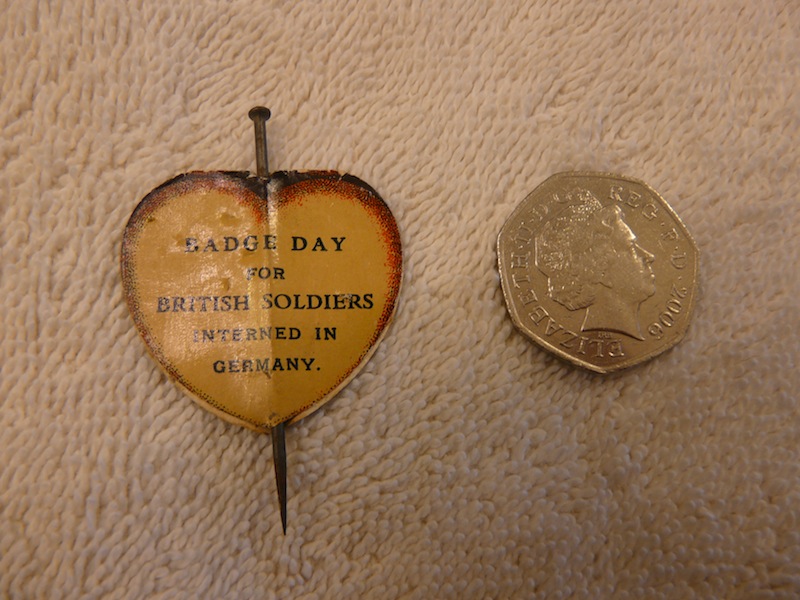-
Posts
1,802 -
Joined
-
Last visited
-
Days Won
10
Content Type
Profiles
Forums
Blogs
Gallery
Events
Store
Everything posted by azyeoman
-
Google Romanian Medal of Maritime Virtue and then click images.
-
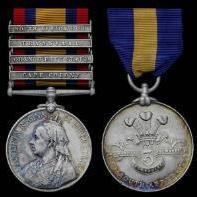
Medal research... POW, MID
azyeoman replied to Noor's topic in Great Britain: Orders, Gallantry, Campaign Medals
Great research for an excellent historical piece! -
Here's another Boer War PoW pair for an interesting battle. QSA with TH, OFS, RL, Trans, LN and KSA with SA01 & SA02 clasps officially named to: 1683 Pte. T. Brown Scot Rifles Thomas Brown was a Wheelwright from Glasgow, he attested on 3rd September 1885 aged 19. During the Boer war, he served with 24th mounted infantry ( Major Gough's unit) Scottish Rifles. He was captured on the 17th September 1901 at Blood River Poort. He was released in 1902 and discharged on 11th August, after which he returned home and worked as a labourer. Brown reenlisted in the Scottish Rifles on 17th August 1914 aged 48. History and battle In August 1901, the Boer leaders determined to send forces south into Natal and the Cape Colony hoping to cause an uprising in the Dutch-majority Cape Colony or at least to gain recruits for their armies. Accordingly, a commando under Botha moved southeast toward Natal while another commando under Jan Smuts raided south into the Cape Colony. British Intelligence detected the plan, but Botha evaded the British intercepting columns. The cold spring rains made the march especially difficult for the Boers' horses. On 14 September, Botha let his 1,000-man commando camp near Utrecht to permit the horses to recover. Meanwhile, Gough's 24th Mounted Infantry (MI) made a 500-mile (800 km) move by train from Kroonstad in the Orange Free State to Dundee in Natal. Gough received intelligence that Botha and 700 Boers were nearby. Gough led his MI from Dundee to De Jaeger's Drift, a ford on the Buffalo River. Dismissing the intelligence report as exaggerated, he led three companies on a reconnaissance across the river. Through his field glasses, he spotted 300 Boers who dismounted at a farm near Blood River Poort. Leaving his colleague Lieutenant-Colonel H. K. Stewart with 450 MI in the rear, Gough moved forward into a plain in the early afternoon, planning to surprise the Boers at the farm. Unknown to Gough, Botha was moving around his right flank with 700 men. Botha's mounted attack completely swamped Gough's outnumbered force. Lieutenant Llewellyn Price-Davies of the King's Royal Rifle Corps won the Victoria Cross for valiantly defending the field guns. Gough was captured, escaped, captured again and finally escaped on foot in the darkness. On the British side, four officers and 19 other ranks were killed or mortally wounded, 2 officers and 19 men wounded, and 6 officers and 235 men captured. According to Boer policy, the captured were stripped of their weapons and any useful gear, and most of their clothing, and were allowed to walk to the nearest British post. The Boers seized two field guns, 180 rifles and a large quantity of small arms ammunition. The 200 captured horses turned out to be in poor condition and of little use to the raiders. Boer losses were light. Botha was unable to exploit his victory because he found all the crossings of the Buffalo River blocked by the British. The Boers moved to the southeast, hoping to find a place to cross into Natal. On the Zululand border, Botha attacked a British camp named Fort Itala, believing it to be weakly defended. Instead, the Boers received a bloody nose when 56 of their men were killed or wounded. When Botha realized that British forces were approaching in overwhelming strength, he turned back into the Transvaal, his raid a failure. For more information see: https://www.angloboerwar.com/forum/17-memorials-and-monuments/3007-blood-river-poort
-

1914--15 Star
azyeoman replied to Leuchtturm's topic in Great Britain: Orders, Gallantry, Campaign Medals
Quartermaster Sgt. Regt. # 113 East Kent Regt. -
A QSA with four clasps: CC. OFS, Trans, SA01 to 908 CORPL: T. Edan. RLY: PNR: REGT Thomas Eden was a British mechanical engineer in No. 6 Co. He served as an older man; he was 41 when discharged on 28 February 1901 after having served one year and 38 days in the Railway Pioneer Regiment. He was marred to Maud Eden of 5 Rochdale Terrace, Observatory Rd, Cape Town. He joined as a Lance Corporal on 12 February 1900 and was promoted to Corporal on 30 March 1900. The Battle of Roodewal took place on,7 June 1900. The British vulnerability to Boer attacks on their lines of communication and supply was demonstrated by Chief-commandant Christiaan De Wet early in June 1900. The garrison at Roodewal Station, on the Bloemfontein to Vereeniging line, was overcome and the mail and supplies stored there looted. De Wet had considerable difficulty in diverting his men’s attention from the booty in order to carry away the large quantities of .303 ammunition suited for use in captured Lee-Enfield rifles. Although the British had taken Pretoria two days earlier, the Orange Free State forces remained very active, blowing up bridges and ambushing supply convoys. As a result Roodewal Station, which had been taken by the British on 23 May and garrisoned with men of the 4th Derbyshires, was the temporary railhead and goods were off-loaded there until the railway to the north could be brought back into commission. De Wet captured a wagon train en route to Heilbron from Vredefort Road Station at Zwavelkrans, near the Rhenoster River on 5 June. It surrendered without resistance as the 200 men on board were outnumbered three to one and fifty-six wagons of supplies were taken. On 6 June, still undetected, De Wet returned to the railway line where he divided his force into three. The first, 300 men and one 75mm Krupp, was sent to deal with Vredefort Road Station at sunrise the next day; the second, with another 300 men, two Krupps and a Pom-Pom, were ordered north to attack the British camp; and De Wet himself, with eighty men and one Krupp, headed for the station at Roodewal itself. The British, who were attacked at dawn, resisted fiercely and De Wet’s men were pinned down until the northern party had succeeded at the camp and brought two more 75mm Krupps south to help. The increased artillery fire forced a British surrender. De Wet observed that their fortifications were constructed of bales of clothing and blankets, which kept British fatalities down to twenty-seven men, while 200 or so were captured. The richness of the prize was beyond Boer powers to exploit, for they lacked the transport to carry it away. The post-bags were opened and looted by Boer and British alike and what the commando could not carry off was to be burnt. De Wet had to work hard to ensure a place for rifle ammunition among the goods his men took, then, according to De Wet: “When the sun set, the burghers were again on the march. But what a curious spectacle they presented! Each man had loaded his horse so heavily with goods that there was no room for himself on the saddle; he had, therefore, to walk, leading his horse by the bridle.” The Railway Pioneer Regiment Around 18 December 1899 recruiting for this corps was opened at Cape Town; and before Lord Roberts commenced his advance from Bloemfontein to Pretoria the first regiment was organised, its work being to assist in protecting the railways and to repair bridges, culverts, and lines when broken. Without outside assistance the corps of Royal Engineers could not have faced the enormous amount of work naturally falling to their department. From the Railway Pioneer Regiment they received very valuable help. On the other hand, the Railway Pioneers were leavened by officers and non - commissioned officers of the Royal Engineers, who are always so efficient that they can infect all those who serve with them with esprit de corps in a marvellously short space of time. Of such value was the work of the Railway Pioneer Regiment that before the close of the war a fourth battalion had been organised. The battalions were employed chiefly on the Cape-Pretoria railway, but they were also on the Krugersdorp line, and sometimes operated as a fighting force a considerable distance from railways. The regiment also did admirable service on the armoured trains which did so much to make railway traffic possible during the guerilla stages. In his evidence before the War Commission, vol i p 445, Lord Roberts said: "An enormous amount of reconstruction was carried out by the Railway Pioneer Regiment and the Railway Companies Royal Engineers. The Pioneer Regiment consisted almost entirely of civilian refugees, mostly mechanics from Johannesburg, and it rendered excellent service. To its aid and that of the Royal Engineer officers and men we were indebted for the fact that the railways very seldom lost touch with the fighting portion of the army, and that we were able to seize Johannesburg and Pretoria, distant about 1000 miles from our base upon the coast, and 260 miles from Bloemfontein, our advanced depot, with such rapidity that the enemy were unable to concentrate their resources and offer a strongly organised resistance". When the 4th Derbyshire Regiment was attacked at Roodewal, Kroonstad district, on 7 June 1900, a detachment about 70 strong of the Railway Pioneer Regiment was present and in the fighting, which ended in the capture of the post. They lost Captain Gale and 4 men killed and about 16 wounded. In the published despatches there is one from Major General Charles E Knox to Lieutenant General Kelly-Kenny forwarding a report by Lieutenant Colonel Capper, RE, commanding Railway Pioneers at Virginia, Kroonstad district, Orange River Colony, as to an attack delivered by the commandos of Muller and Boerman at daybreak on 14th June 1900. The enemy was "said to be about 800 strong, with one or two pom-poms, a maxim, and, I think, one field-gun, but this is uncertain. We had to hold rather an extended position, our left being in trenches on very broken ground and in thick scrub which there was no time to clear. The enemy got into this scrub and gave some trouble by sniping. The garrison consisted of four companies 3rd Battalion Royal Lancasters under Colonel North, about 250 fit for duty, and four companies Railway Pioneer Regiment under Major Seymour, about 300 fit for duty, together with 25 men Royal Irish (Rifles) Mounted Infantry under Lieutenant Davenport, 16 fit for duty. The attack was most pressed on our left, and was held most steadily by No 3 company Railway Pioneer Regiment, under Lieutenant Mitchell of that regiment: fighting was continued on all sides until about 11 am, when it quieted down, and the enemy had practically retired by the time a body of 170 Yeomanry, under Lieutenant Crane, arrived from the south at about noon ... The troops behaved very well and steadily. The Railway Pioneer Regiment in the advanced trenches, on the left especially, were most cool and collected, engaging the enemy at very close quarters. They were for part of the morning surrounded by the enemy in the scrub, but never lost their heads, and the enemy were ultimately driven out of the scrub by the advance through it of a line of reserve Railway Pioneer Regiment aided by half a company of militia". The losses of the regiment were Major Seymour and Lieutenant Clements and 5 non-commissioned officers and men killed; Lieutenant Mitchell and 2 non - commissioned officers and men wounded. Colonel Capper added that he could not "speak too highly of Lieutenant Mitchell, a young officer who was wounded in both thighs about 6 am in going from one trench to another to encourage the men, and remaining throughout the day in the most exposed trench, keeping his men, 22 in number, scattered in several small trenches, calm, ordering them not to waste ammunition, etc. I attribute to his example, and the very steady conduct of the men of his company in the advanced trenches, who suffered severely—one holding three men had one killed, and one holding five men had two killed,—the fact that our losses were so comparatively small. I especially deplore the loss of Major Seymour, whose loss will not only be felt by us as a regiment but by the whole of South Africa. He was killed while advancing with the extended line through the bush to clear out the snipers". Six dead Boers were found, four of them within 40 yards of Mitchell's trenches. The regiment continued to do most excellent work, chiefly on the lines of communication between Bloemfontein and Pretoria, and their posts had constantly to be on the alert. In his telegram of 26th November 1900 Lord Roberts said: "Barton reports that Brakpan was attacked at 3 am on the 24th, and was defended against a fierce attack by 7 of the Railway Pioneer Regiment and 10 mounted infantry. Our men behaved splendidly, and drove off the enemy, who left 3 dead. A Transvaal flag was captured". On 27th March 1901 the 1st Battalion had 1 man killed and Captain Mitchell, mentioned above, severely wounded near Boksburg. In a telegraphic despatch of 21st November 1901 Lord Kitchener stated that Commandant Buys had been captured, after attacking a patrol of about 100 of the Railway Pioneer Regiment on the Vaal near Villiersdorp; and in the telegram of 23rd November he stated: "Further report of Major Fisher's engagement near Villiersdorp, 20th November, shows that during the night of 19th patrols sent from his post at Rietfontein, slightly in advance of South African Constabulary, on Kalkspruit, to seize ridge overlooking Landsdrift, found enemy in possession. At dawn Major Fisher moved forward towards ridge, and was attacked both from north and south, but gradually took up a position giving good cover to his small force. At 9 am his horses near south end of position stampeded, and in confusion enemy effected a lodgment. Major Fisher and Captain Langmore were both dangerously wounded, and the small parties taken in detail by the enemy, about 300 strong, were all forced to surrender by 10 am Colonel Rimington's column came up about 11 am, but enemy, except small rearguard, had gone off, releasing prisoners. Rimington's men captured Commandant Buys, who was wounded". The casualties of the Railway Pioneer Regiment were about 6 killed and 6 wounded. Captain A B Inglis was returned as severely wounded in addition to the officers named above. The regiment continued its good work, chiefly on the railways, down to the close of the war. Captain H C Thorold (Leicester Regiment, attached) was killed at Rietfontein on 18th February 1902. The Mentions gained were as follows:— LIEUTENANT GENERAL KELLY-KENNY's DESPATCH.—Lieutenant Mitchell deserves special recognition. Previous to the attack on post, during the action, and since, Lieutenant Colonel Capper has been untiring in his duties. LORD ROBERTS' DESPATCHES; 2nd April 1901.—Majors Q H Goodwin, awarded CMG, N Wilson, Captain W E C Mitchell, Quartermaster Sergeant W Cartledge, Company Sergeant Major S Beaton, Sergeant (now Captain) C E Marchant, Corporals T M'Meekan, G M Smythe, Privates S Stafford, W Tire. 9th September 1901.—Corporals W J Thomas, R Mackie, S Richards, J R Shipley, J W Roach, Lance Corporal C Goulding, Privates J Holmes, W Doons, G Kramert. LORD KITCHENER'S DESPATCHES: 8th March 1901.—Lieutenant Evans. 8th July 1901.—Sergeant J A Anderson with 3 men, on railway patrol, surprised 50 Boers at Doornkop, killed 2, wounded several, and took 5 horses. Sergeant Grainger, with 5 men, kept off a strong party of Boers all night. Sergeant Major M C Jameson, surprised by enemy, behaved with great steadiness, and extricated his patrol; mentioned in AO Corporal J R Shipley, in command of 7 men, was heavily attacked by enemy, repulsed them, and, though severely wounded, remained in charge. 8th August 1901.—Captain A W Stockett, 1st Battalion, for continuous good work in command of armoured train, and before that of corps of cyclists, and especially at Baatman's Siding, when he was largely instrumental in capture of De Wet's convoy. 8th March 1902.—1st Batallion.—Private Creak, promoted corporal; distinguished conduct defence of post at Brakpan, 5th February 1902, when 5 men repulsed 49 Boers. 3rd Battalion —Lieutenant W D Oswald, for rescue of native scout, January 31, enemy being close to him and pursuing for some miles. Corporal E C Baker, promoted Sergeant, Privates Murphy, J M'Arthy, J M'Knight, on 30th January, formed a lying-out post between two blockhouses in Vereeniging attacked by 50 Boers, 2 wounded, refused to surrender, and eventually drove enemy off. 4th Battalion —Private W Lowes, at Schoeman's Drift, December 30, returned under close fire to rescue a wounded comrade. Army promotion: To be Honorary Captain, Quartermaster and Honourable Lieutenant G Taylor, RE, Adjutant Railway Pioneer Regiment. 23rd June 1902.—Captains W Roe, A E Page, Lieutenant J C Rouse, Regimental Sergeant Major Reid, RE; Regimental Quartermaster Sergeant D R Stuart, Sergeant E P Simmons, H A Lawrence, Sergeant G Salter, RE; Private H A Lawrence.
-
Oddly, I've recently come across what I have thought to be scarce to rare PoW medals or groups to men who served in the Royal Navy or the Mercantile Marine. The following is one such group to the latter, and consists of a Mercantile Marine Medal, Victory Medal and a Death Plaque to Daniel Hanlon. It's obviously missing the BWM and if anyone knows its location, please contact me as I'd very much like to reunite the group. Daniel Hanlon was born in Bootle in 1885. He was the son of Michael and Mary Hanlon (nee Rice) who were Irish. They were married in the Dundalk district in 1878. The moved to Bootle and lived on 41 Bostock St. where Michael worked as a dock labourer. Daniel's sister Annie was born in 1881 and his brother Henry was born in 1888 and younger sister was born in 1892. By 1901, Mary Hanlon and the four children were living at 30 Pleasant View, Bootle. By then, Daniel was also a dock labourer. By 1911, Annie and Mary were the only two living in Bootle and were lodgers with the O'Toole family at 38 Kirk St. Daniel Hanlon married Esther Donohue of 73 Audley St. On 22 March, 1917, Daniel was serving as a Fireman on board S.S. Brecknockshire bound Rio de Janeiro. She was on her maiden voyage and her cargo was 7,650 tons of coal. The ship was captured and sunk in the Atlantic by S.M.S. Möwe (German for Seagull) on 15 February 1917. The captian and crew were taken prisoner and arrived in Bremerhaven, Germany on 22 March 1917. However, Daniel Hanlon died from Tuberculosis the day before on 21 March 1917. He was buried at sea. He was 28 years old. One of Hanlon's shipmates, Greaser J. Riley, aged 53, died of TB after arriving in Bremerhaven and is buried in Hamburg. Another fireman, Farley, died on 29 August 1917 and is buried in Hamburg Cemetery too. S.M.S Möwe was the most successful German merchant raider in WWI and WWII, and served in the Imperial German Navy and sank 40 ships during the Great War. She could approach her targets because she was designed as a neutral cargo ship. After the Treaty of Versailles, she went to Britain, to be operated by Elders and Fyffes as the freighter Greenbrier. In 1933 she was sold to a German shipping company. As the freighter Oldenburg, it served the route between Germany and occupied Norway in World War II. On 7 April 1945 she was attacked by Bristol Beaufighters of Coastal Command aircraft from No. 114 Squadron RAF, No. 455 Squadron RAAF, and No. 489 Squadron RNZAF at her moorings sheltering off the coast of Norway—near the village of Vadheim in Sogn og Fjordane county. Following an intense strafing and rocket attack, holed by their rockets and strafed by cannon fire, she burned and sank. see: https://en.wikipedia.org/wiki/SMS_Möwe Hanlon's name is listed in Marcus Bateman's Index of British Fishermen and Merchant Seamen Taken Prisoner of War 1914-1918. His address was 73 Audley St., Bootle. He death was reported in the Bootle Times on 29 June 1917. He is commemorated on the following memorials: Tower Hill Memorial (Addenda Panel) , London; Bootle Civic Memorial, and the ST. James' Roman Catholic Church, Bootle. The First World War section of the Tower Hill Memorial commemorates almost 12,000 Mercantile Marine casualties who have no grave but the sea. It was unveiled by Queen Mary on 12 December 1928. S.S. Brecknockshire was a British steamship that was built by Harland & Wolff in Belfast. She was 8,423 tons, length 480' and could sail at 12 knots. She, along with the Titanic, were the only two H&W ships to be lost on their maiden voyages. She was launched on 12 September 1916 and was owned by the Royal Mail Steam Packet Company of London. She had a 12-cm gun mounted on her stern. The captain was G. A McKenzie and he had a crew of 90. She departed Belfast, Ireland on 11 January 1917 and after a stop in Liverpool, she continued on her way to Rio. She was captured and sunk 490 miles E x N from Cape Frio, Brazil. For more information on the Brecknockshire wreck and a photo of her sinking, see https://wrecksite.eu/wreck.aspx?153342 https://wrecksite.eu/peopleView.aspx?5786 Hanlon's widow, Esther, was awarded a pension on 11 October 1923. According to another, dated 13 November 1936, she was awarded L69.6.8 per annum or 5 pounds, 15 shillings and seven pence per month and payable on the 13th day of each month.
-
A seemingly uninteresting lone Victory Medal to named to 198195 Samuel Folland AB RN and missing it's companion China Medal, 15" Star and BWM. (If anyone knows the location of one or all of the above, please contact me.) Folland was captured on SS Appam and held PoW in Germany until the war's end. This medal is to a man who had a very interesting story along with his ship, the SS Appam. SS Appam was a British steamship owned by the Elder Dempster Lines, and was captured at sea by the German raider SMS Mowe in 1916. The Germans took the ship to port at Hampton Roads, Virginia in the United States where the United States Supreme Court of the decided who would get ownership of the vessel. SS Appam was built in 1913 by Harland & Wolff in Belfast (H & W built the Titanic) United Kingdom. She had a gross tonnage of 7,781 and was 425 feet long with a 37 foot beam. On 11 January 1916 the ship left Dakar, Senegal for Plymouth, United Kingdom, carrying 168 passengers and 133 crew members. Among the passengers were: Sir Francis Charles Fuller, The British Chief Commissioner to the Ahanti Region and Sir Edward Merewether, the Governor of the Leeward Islands and his wife. By 15 January communication with the vessel had stopped and the vessel was thought to have sunk when an empty lifeboat was seen. In actuality, the Imperial German Navy Merchant raider SMS Mowe had captured SS Appam on 15 January 1916. The Germans put a prize crew aboard Appam, and, under German control as a prize, Appam was separated from Möwe on 17 January and made her way to the United States, where she went into port at Hampton Roads, Virginia. At the time, the United States was a neutral country so Appam′s British owners filed suit in U.S. federal court to have Appam returned to them. On 29 July 1916, U.S. Federal Judge Edmund Waddill of Virginia directed that Appam, along with the cargo remaining aboard her and the proceeds of her perishable cargo that already had been sold, be returned at once to the ship′s British owners. The German Empire appealed the decision to the US Supreme Court, which heard the case as The Steamship Appam, 243 U.S. 124 (1917), and on 6 March 1917, the Supreme Court found in favor of the British owners, handing down a decision that a belligerent nation may not bring prizes of war into a neutral port. On 28 March 1917, Appam was returned to her British owners and renamed SS Mandingo, before reverting to her original name at the end of the war. The last photo is of HMS Wallaroo on which Folland served in China. For more information see: http://waratahrevisited.blogspot.com/2015/08/waratah-and-ss-appam.html
-
Here's an important Boer War PoW group sadly missing its companions - a QSA & KSA to a Pte. captured at Spion Kop. There were Sudan and Khedive's Sudan with Khartoum clasp named to 4655 Pte. A. Shepherd, 2nd Lancashire Fusiliers Shepherd is entitled to a QSA with OFS, RL and Trans and a KSA with SA01 and SA02 clasps. Please contact me if found as I'd like to reunite the group. All of the above medals have been confirmed on the medal rolls. His initial is shown as "J" on the QSA & KSA rolls but with the same army number 4655. John Thomas Shepherd was an alias for Albert Barlow who was born in Bradford, Manchester. He attested at Bury on 12/12/1893 when he was 18 years old. He was of pale complexion, had blue eyes and dark brown hair and was 5'4" and weighed 120 lbs. He was a chemical plumber by trade and CE by belief. He was captured in the battle of Spion Kop on 24/1//1900 and was released in Pretoria in June 1900. He continued to serve, most likely with the 14th Bn. Mounted Infantry. He was in the Army Reserve on 27/2/1902 and was discharged in Preston on 11/12/1909. His character was "good". He married Mary Ann Gilmore on 8/10/1904 in St. Aidan's Church, Manchester. The 2nd Battalion sailed on the Norman on 2nd December, arrived at the Cape about the 19th, and was sent round to Durban. Along with the 2nd King's Royal Lancaster Regiment, 1st South Lancashire Regiment, and the 1st York and Lancaster Regiment, they formed the 11th Brigade under Major General Woodgate, and part of the 5th Division under Sir Charles Warren. The work of the brigade has been sketched under the Royal Lancaster Regiment, and that of the Natal Army generally under the 2nd Queen's, Royal West Surrey. When Sir Charles Warren with three brigades was sent across at Trichard's Drift, it will be remembered that the intention of the Commander-in-Chief was that the force should push, via Acton Homes, round to the rear of the Boer position. Sir Charles decided that this was not feasible, and he set about clearing the hills on his right front. On the 20th January he proceeded to put his new plan into execution. The IIth Brigade were on the British right, to the west of Spion Kop. The Lancashire Fusiliers on the right, and York and Lancaster on their left, were ordered to attack a strong position, being assisted by the other infantry, notably the Irish Brigade in the centre, and by six batteries of artillery—7th, 19th, 28th, 63rd, 73rd, and 78th—massed at Three-Tree Hill, and the naval guns at Spearman's. The ground was very difficult, and the Fusiliers were at times greatly cramped for space. About three o'clock the visible crest was stormed by a grand rush, but the troops on reaching the top found themselves in face of another and stronger position. They could do nothing but hold on like flies on a wall, as one writer says. That day cost the battalion 4 officers wounded, 18 men killed and about 90 wounded. On the 21st the fighting was carried on chiefly at the left flank by Hildyard's brigade. On the night of the 23rd Spion Kop was taken, the Lancashire Fusiliers being part of Woodgate's force and remaining on the summit all the 24th. An account of the Spion Kop combat is given under the 2nd Royal Lancaster. The Lancashire Fusiliers along with the other troops on the summit earned the praises of General Buller. The losses of the battalion were very severe—3 officers killed, 5 wounded, about 40 men killed, 100 wounded, and some missing. At Vaal Krantz the brigade was ordered to make a feint attack on the British left; this was carried out satisfactorily. The battalion did not take part in the fighting between 13th and 27th February, being left along with other troops under Colonel Burn-Murdoch to hold an intrenched post near the bridge over the little Tugela at Springfield, and other positions on the left and rear. The Lancashire Fusiliers, now reduced to about 500 men, held Frere till the 26th February, when they were moved to Gun Hill and Chieveley. Nine officers and 16 men were mentioned in General Buller's despatch of 30th March 1900, chiefly for exceptional gallantry at Spion Kop, 5 being recommended for the distinguished conduct medal. In his final despatch of 9th November 1900 General Buller mentioned 7 officers and 2 non-commissioned officers; and in Lord Roberts' final despatch 10 officers and 19 non-commissioned officers and men were mentioned. When General Buller moved into the Transvaal the 5th Division remained about the railway, and then operated in the south-east of that country, the Utrecht-Vryheid district, and frequently saw tough fighting. The Mounted Infantry of the Lancashire Fusiliers formed part of the garrison of Vryheid when that town was attacked on 10th-11th December 1900. After very severe fighting the enemy was driven off with a loss of 100 killed and wounded. The men of the battalion had about 10 casualties. At Fort Itala on 26th September 1901, the 2nd Lancashire Fusiliers were represented in the little force which made one of the finest stands recorded in the campaign. One man of the battalion was killed and 5 wounded. In January 1901 the battalion entrained at Dundee for the Pretoria district. On arriving about Elandsfontein five companies were put into the column of Colonel Allenby, and three companies, under Major Tidswell, into the column of Colonel E C Knox; these columns being two of those then commencing the great sweep under General French to the Piet Retief district. In the beginning of May the battalion got together again at Middelburg and relieved the 2nd Berkshire Regiment on the railway line. Headquarters were at Wonderfontein. The battalion remained in the Eastern Transvaal till peace was declared. Some Mounted Infantry of the battalion were present at Kaffir's Spruit on 19th December 1901, when 1 non-commissioned officer and 2 privates gained mention in despatches by Lord Kitchener. In the final despatch 5 officers and 8 non-commissioned officers and men were mentioned. For more information see: http://warfarehistorynetwork.com/daily/military-history/an-acre-of-massacre-the-second-boer-wars-battle-of-spion-kop/ https://www.britishbattles.com/great-boer-war/battle-of-spion-kop/ A summery of the battle: Spion Kop, just northeast of Warren's force, was the largest hill in the region, being over 430 metres (1,410 ft) in height (relative height from its base). It lay almost exactly at the centre of the Boer line. If the British could capture this position and bring artillery to the hill then they would command the flanks of the surrounding Boer positions.[9] On the night of 23 January, Warren sent the larger part of his force under Major General Edward Woodgate to secure Spion Kop. Lieutenant Colonel Alexander Thorneycroft was selected to lead the initial assault. (Thorneycroft was one of six "special service" officers, among whom were also Robert Baden-Powell and Herbert Plumer, despatched to South Africa shortly before the war to recruit local irregular corps. Thorneycroft's mounted infantry were raised in Natal and numbered 360.) The British climbed up the hill at night and in dense mist. They surprised the small Boer piquet and drove them off the kop at bayonet point. Of the 15 men in the Boer piquet, one was mortally wounded and his grave lies on the hill to this day. Ten British soldiers were wounded in the charge. The surviving Boers retreated down the hill to their camp waking up their fellow Boers by screaming "Die Engelse is op die kop." (The English are on the hill.). A half-company of British sappers began to entrench the position with a mere 20 picks and 20 shovels (while almost 1,000 soldiers stood around idle) and Woodgate notified Warren of the successful capture of the hilltop. As dawn broke, the British discovered that they held only the smaller and lower part of the hilltop of Spion Kop, while the Boers occupied higher ground on three sides of the British position. The British had no direct knowledge of the topography of the summit and the darkness and fog had compounded the problem. Furthermore, the British trenches were inadequate for all defensive purposes. Because the summit of the kop was mostly hard rock, the trenches were at most 40 centimetres (16 in) deep and provided an exceptionally poor defensive position – the British infantry in the trenches could not see over the crest of the plateau and the Boers were able to fire down the length of the crescent-shaped trench from the adjacent peaks. The Boer generals were not unduly concerned by the news that the British had taken the kop. They knew that their artillery on Tabanyama could be brought to bear on the British position and that rifle fire could be brought to bear from parts of the kop not yet occupied by the British. However, the Boer generals also knew that sniping and artillery alone would not be sufficient to dislodge the British – and the Boer position was desperately vulnerable. If the British immediately established positions on Conical Hill and Aloe Knoll (the two unoccupied kopjes on the kop itself) they could bring their artillery to bear on Tabanyama, threatening the key Boer positions there. More importantly, there was a risk that the British would storm Twin Peaks (Drielingkoppe) to the eastern end of Spion Kop. If Twin Peaks fell, the British would be able to turn the Boers' left flank and annihilate the main Boer encampment. The Boer generals realised that Spion Kop would have to be stormed quickly if certain defeat were to be averted. The Boers began to bombard the British position, dropping shells from the adjacent plateau of Tabanyama at a rate of ten rounds per minute. Meanwhile, Commandant Hendrik Prinsloo of the Carolina Commando captured Aloe Knoll and Conical Hill with some 88 men, while around 300 burghers, mainly of the Pretoria Commando, climbed the kop to launch a frontal assault on the British position. Prinsloo told his men: "Burghers, we're now going in to attack the enemy and we shan't all be coming back. Do your duty and trust in the Lord." Minutes later, hundreds of Boers swarmed in to attack the British positions at the Spion Kop crestline, much to the surprise of the British. It was very unusual for the Boers to launch a daytime massed attack quickly resulting in vicious, close-quarters combat. This was not a custom of the Boers' style of warfare. The British Lee–Metford and Lee–Enfield rifles were no less deadly than the Boer Mauser rifles. However, both sides exchanged fire at close range and engaged in hand-to-hand combat, with the British wielding fixed bayonets and the Boers wielding hunting knives and their own rifles used as bludgeons. After suffering serious losses, the Boer assault carried the crest line after several minutes of brutal hand-to-hand combat, but could advance no further. A kind of stalemate now settled over the kop. The Boers had failed to drive the British off the kop, but the surviving men of the Pretoria and Carolina commando now held a firing line on Aloe Knoll from where they could enfilade the British position and the British were now under sustained bombardment from the Boer artillery. The British had failed to exploit their initial success, and the initiative now passed to the Boers. Morale began to sag on both sides as the extreme heat, exhaustion and thirst took hold. On one hand the Boers on the kop could see large numbers of burghers on the plains below them who refused to join the fight. The sense of betrayal, the bloody failure of the frontal assault, the indiscipline inherent in a civilian army and the apparent security of the British position proved too much for some Boers, who began to abandon their hard-won positions. On the other hand, the bombardment began to take its toll on the British. Woodgate fell at about 08:30, mortally wounded by a shell splinter. In quick succession, Colonel Blomfield of the Lancashire Fusiliers took command but was wounded soon after Woodgate's death, while the sappers' officer, Major H.H.Massy, and Woodgate's brigade major, Captain N.H. Vertue, were killed. Officers and men from different units were intermingled, and the British were now leaderless, confused and pinned down by the heavy Boer artillery and rifle fire. The British artillery, positioned lower down the slopes of Spion Kop, were unable to hit back at the Boer guns.[1] The British artillery was also missing their marks causing one soldier to remark in his diary of the events "our gunners, by the inaccuracy of their fire did far more damage to our front line of infantry than to the Boers!" Colonel Malby Crofton of the Royal Lancasters took charge and semaphored a plea for help, "Reinforce at once or all is lost. General dead." After that the stunned colonel failed to exercise any leadership. Thorneycroft seems to have taken charge, leading a spirited counterattack that failed in the face of withering fire. Warren had already dispatched Major General John Talbot Coke's brigade of two regular battalions and the Imperial Light Infantry (raised in Durban) to reinforce the summit. However, he refused to launch an attack on Tabanyama and barred his guns from firing on Aloe Knoll, believing this to be part of the British position. At 11:40, Buller, who could see that things were not going well, suggested to Warren that Thorneycroft be appointed commander on the kop. The first runner to Thorneycroft was shot dead before he could utter a word. Finally, a second runner brought the news, "You are a general." Winston Churchill was a journalist stationed in South Africa and he had also been commissioned as a lieutenant in the South African Light Horse by General Buller after his well-publicized escape from Boer captivity. Churchill acted as a courier to and from Spion Kop and Buller's headquarters and made a statement about the scene: "Corpses lay here and there. Many of the wounds were of a horrible nature. The splinters and fragments of the shells had torn and mutilated them. The shallow trenches were choked with dead and wounded." About 13:00, the situation proved too much for some men of the Lancashire Fusiliers who attempted to surrender. Thorneycroft personally intervened and shouted at the Boers who advanced to round up prisoners, "I'm the commandant here; take your men back to hell sir. I allow no surrenders." Luckily for Thorneycroft, the first of the British reinforcements arrived at this moment. A vicious point-blank firefight ensued but the British line had been saved. At 14:30, Thorneycroft sent Warren a plea for reinforcements and water. Meanwhile, Coke never reached the summit. He saw Thorneycroft's message for help but then did nothing to assure the lieutenant colonel of his nearby presence or support. The Middlesex Regiment and the Imperial Light Infantry, under Colonel Hill, who was senior to Thorneycroft in the army list and who also believed he was overall commander on the kop, held the British right for two and a half hours until a second crisis occurred when they too began to give way. The Cameronians (Scottish Rifles) arrived at this point, and drove the Boers back with a bayonet charge. The fighting on the British right now became a stalemate. In the morning, Warren had asked for reinforcements from Lyttelton's division, even though he had eleven battalions of his own to draw upon. Without asking Buller, Lyttelton sent two battalions toward Spion Kop. One battalion, the King's Royal Rifle Corps turned aside to attack Twin Peaks. After losing Lieutenant Colonel Riddell killed and 100 other casualties, the rifles cracked the thin Boer line and carried the double summit at 17:00.
-

Kimberley Star group
azyeoman replied to Thomas Symmonds's topic in Great Britain: Orders, Gallantry, Campaign Medals
Excellent group! Thanks for sharing. -
Victory Medal with MID (missing) named to: 5103 Pte. A. Perrett. Wilts. R. He was gazetted MID in the 30 January 1920 LG for gallant and distinguished service while a prisoner of war under Army Order 193 of 1919, which states, "Rewards for officers and soldiers for services in the field and for services rendered in captivity or in attempting to escape or escaping therefrom". Perrett is entitled to a QSA, KSA, 1914 Star and clasp trio. If anyone knows the whereabouts of his other medals, (QSA, KSA, 14 Star and BWM) please contact me as I would like to reunit the group. Arthur Perrett was a laborer from Gosport, Hants and enlisted when 18 years and nine months old on 10 Oct. 1898. He was 5'5" tall, 125 lbs and had light brown hair with gray eyes. He was C of E. He was in the 2nd Battalion and served for a total of 21 years and 35 days. He served in South Africa from 16/12/1899 to 15/4/02, then in India from 26/4/02 to 26/10/09. He returned to South Africa and was there from 28/10/09 to 6/2/10 and from there went to Gibraltar where he was stationed from 2/9/13 to 3/9/14 when the regiment went home and then on to Belgium. The 2nd Wilts landed at Zeebrugge on 7 October and were in action at Reutel. They were attacked by two entire regiments of Germans and did will, but at a terrible toll with casualties of 450 men and 18 officers captured, and 76 ORs and 70 officers were KIA and 229 WIA. Perrett was a PoW for four years and six months in German and was released on 19/12/1918 and home on 20/12/1918 in time for Christmas. For more information on the 2 Wilts, see: http://www.thewardrobe.org.uk/research/history-of-regiments/the-duke-of-edinburghs-wiltshire-regiment-1881-1920-the-wiltshire-regiment-duke-of-edinburghs-1920-1959 http://www.wartimememoriesproject.com/greatwar/allied/battalion.php?pid=847
-
QSA 1899-1902 with clasps for: Cape colony, Wepener, Transvaal and Wittebergen officially named to: 376 Trooper D. (Daniel) Ballock, Brabant's Horse. He was captured and taken PoW at Browns farm 7-2-1900. After his release, he continued to serve and was eventually discharged on 19 February, 1901. He has served previously as a trooper (223) and later as a corporal (1673) in Scott's Railway Guards. He served in the 1st Brabant's Horse. His QSA is verified on the medal rolls and he was also awarded a KSA with two clasps. If anyone knows the where abouts of the KSA, please contact me as I'd like to reunite the pair. The clasp inscribed “Wepener" was granted to all troops engaged in the defence of that place between April 9th, 1900 and April 25th, 1900, both days inclusive. The clasp inscribed "Wittebergen" was granted to all troops who were inside a line drawn from Harrismith to Bethlehem, and from Senekal and Clocolan, along the Basuto border, and back to Harrismith, between July 1st and 29th, 1900, both dates inclusive. There were some 2,050 Wepener clasps issued. Due to the subsequent movement of troops between units, there was a wide range of primarily South African units to which the clasp was ultimately issues. This list shows the approximate number of clasps issue by unit. Cape Mounted Rifles - 513 2nd Brabant's Horse - 473 Kaffrarian Rifles - 422 1st Brabant's Horse - 392 Royal Scots - 83 Driscoll's Scouts - 78 South African Constabulary - 25 Royal Engineers - 11 Prince of Wales Light Horse - 9 KFS, 2nd - 8 Scottish Horse, 1st Battalion - 7 Prince Alfred’s Own Volunteer Guard - 5 Johannesburg Mounted Rifles - 3 Royal Garrison Artillery - 3 Imperial Light Horse, 2nd Battalion - 2 Scottish Horse, 2nd Battalion - 2 Imperial Light Horse, 1st Battalion 1 Cape Medical Staff Corps - 1 Lancashire Fusiliers 1 7th Hussars 1 Brabant's Horse from Steven's The Complete History of the War This corps was raised and took the field in the Queenstown-Dordrecht district. Major Pollock in his volume frequently refers to them in appreciative terms. On 28th November he visited their camp and saw them at drill and musketry. "The progress already made quite astonished me ... Poor De Montmorency was then adjutant, and judging by the results, both he and his predecessor, Collins of the Berkshire, had a great deal to be proud of. The shooting on the range was very good". These facts are noted to show how quickly the volunteer and irregular troops got into fighting trim. The regiment was very soon sent to hold various posts, and when General Gatacre went out to attack Stormberg, on the night of 9th December, 160 of Brabant's were intended to join the attacking force from Penhoek, but it will be remembered the telegram was not delivered. The detachment under De Montmorency did arrive at Molteno on the afternoon of the 10th, and scouted back on the line of the British retreat. On 22nd and 23rd December De Montmorency and his men had skirmishes near Dordrecht, in which they got the better of the enemy, who had the stronger force. About this time Captain De Montmorency raised his body of scouts, all picked men, who did some very fine work. On the 28th, with some of his own scouts and some of Brabant's Horse, he was out near Dordrecht, but little was to be seen of the enemy. On the 30th, however, there was quite a stiff little fight, in which a party of the Frontier Mounted Rifles was cut off and only rescued the following day (see Cape Mounted Rifles). Captain Flanagan's company of Brabant's was said to have done very well. The corps did an immense amount of patrol work throughout January, and Captain Flanagan's company were the first troops in the Queenstown district to gain touch with the Vlth Division, then approaching the Stormberg country from Cape Town via Thebus. Lord Roberts had in January announced the appointment of Brigadier General Brabant as Commander of the Colonial Division, which included the two regiments of this corps, and under that general they did excellent work in the clearing of the north-east of Cape Colony. In the fighting about Dordrecht, in the second half of February 1900, the corps took a very prominent part and were several times very heavily engaged. In Lord Roberts' telegram of 18th February he mentioned that Brabant "had attacked Boer position on 16th. He gradually closed in on laager during the day. Fighting lasted from 9 am till dusk. At midnight Captain Flanagan, 1st Brabant's Horse, attacked and took laager at the point of the bayonet, capturing the stores". Captain Crallen and Lieutenant Chandler and 4 non-commissioned officers and men were killed, and 5 non-commissioned officers and men wounded. On 5th March there was again severe fighting near Dordrecht, in which the Cape Mounted Rifles bore the heaviest share of the losses. At Aliwal North, on the 11th, Brabant's Horse had 3 killed and 6 wounded. A second regiment having been raised in December, Lieutenant Colonel H M Grenfell, 1st Life Guards, was appointed to command it, and when Colonel Dalgety was besieged in Wepener (see Cape Mounted Rifles), the first and a portion of the second regiment were with him, their strength being respectively 345 and 459. One squadron of Brabant's Horse took part in the relief of Wepener. During the siege Lieutenant Thurston and 4 men were killed, and 5 officers— Surgeon Captain Perkins, Lieutenants W E Holford, Turner, and Duncan, and Quartermaster Williams— and about 30 men were wounded. In the advance northwards, and in the operations preparatory to the surrounding of Prinsloo, the corps was very frequently engaged. In the Hammonia district they had an immense amount of difficult scouting, and several times, in the latter half of May and in June, they had encounters with superior forces and rather heavy losses. On 29th June Lieutenant J S Orr was severely wounded, and other casualties were suffered in an action in which the enemy had to be driven across the Zand River. On 3rd July Lieutenant and Adjutant A F C Williams was shot through the lung. On the 6th to 8th July at the capture of Bethlehem, on the 16th near Witnek, and on the 23rd, 24th at Slabbert's Nek, Brabant's Horse were in the forefront and gained distinction, but, as a matter of course, had to pay the price. 'The Times' historian points out that it was some "adventurous scouts" of Brabant's Horse who, by discovering on the night of the 23rd a commanding summit to be unoccupied, enabled Clements to seize the ridge at daybreak—the corps being entrusted with this task. The 1st Regiment of the corps, now commanded by Major Henderson, 8th Hussars, accompanied Dalgety to the Reitzburg district, and thence in August across the Vaal in the pursuit of De Wet (see Cape Mounted Rifles). In his despatch of 1st September 1900 Lord Roberts said that "the enemy managed to derail another supply train south of Klip River (Johannesburg district) early this morning. Two men were killed, 1 wounded, and 35 taken prisoners. The engine was blown up, and thirteen trucks were burned. A party of Brabant's Horse on duty at Klip River Bridge followed the enemy as soon as the report of the accident reached them, drove them into the neighbouring hills, and recovered all the prisoners". The 2nd Regiment was ordered to the eastern Transvaal in August, to take part under General Button in the movement from Belfast to the Portuguese border, crossing some of the most difficult country in South Africa. In November they were operating about Frederickstad in the Central Transvaal with General Barton. They had skirmishing very frequently, and on 11th December had 1 man killed and 3 wounded. A detachment of Brabant's Horse remained in the Orange River Colony in August. On the 27th of that month Sergeant Major Rutters of the 2nd Regiment was killed, and Corporal Abernethy was wounded at Winburg. During the last quarter of 1900 a portion of the corps was with Bruce Hamilton in the Orange River Colony. In the despatch of 8th March 1901, dealing with the events for the preceding four months, Lord Kitchener said that when, in November, it became apparent that De Wet was to attempt to invade Cape Colony, he (Lord Kitchener) railed certain forces from the Transvaal to the south of the Orange River Colony; these included the 2nd Regiment of Brabant's Horse. In his telegraphic despatch of 15th December 1900 Lord Kitchener said, "During the recent operations in the Zastron district, a party of Brabant's Horse became detached, and being surrounded in a defile had to surrender". The casualty list showed 3 men killed, 11 wounded, and 106 missing. The mishap was unfortunate, coming after so much good sound work; but at that time numerous small columns and patrols were then pursuing the enemy, who was in great strength in the south-east of the Orange River Colony, while to keep touch with him forces had to be greatly scattered, and there was always a chance of any little detachment being cut off. About 18th to 24th December the 2nd Brabant's had much fighting about Steynsburg, Cape Colony—the object being to prevent the Boers working south. On 28th December the 2nd Regiment had Captain Cholmondley and 5 men wounded. When it was seen that Kritzinger and Smuts, about 16th December, had effected an entrance into Cape Colony with about 2000 men, more troops were railed from the Transvaal to Naauwpoort, and in this second batch were the 1st Brabant's Horse. In February 1901 a portion of Brabant's Horse was operating in the south-west of Cape Colony, and Lieutenant J M Grant gained mention near Lambert's Bay on 1st March. Near Jansenville on 20th March 2 men were killed and 6 wounded in an action when Colonel Scobell and Colonel Colenbrander inflicted a severe defeat on Scheepers and Malan. About this time there was fighting daily, and casualties came often. The despatch of 8th July 1901 shows that two squadrons of Brabant's Horse were in May and June, along with a squadron of the 9th Lancers and three companies of Imperial Yeomanry, operating in the Cradock and Richmond districts, chiefly against Malan's commando. On 28th June the 1st corps were heavily engaged near Richmond, and had 2 officers, Captain M Bowker and Lieutenant J R Thompson, and 6 men wounded. On 18th July Captain W J S Rundle and several men were wounded. During the remainder of the war Brabant's Horse were employed in Cape Colony, traversing almost every part of it. On 5th February 1902 they were in the sharp fight at Uitspanfontein near Beaufort West, when they had about half a dozen casualties. During the last year the work was harder than ever, and there was seldom the satisfaction of a fight, except when the enemy was confident that he had a successful trap laid.
-

Boer War Kimberley Trio
azyeoman replied to azyeoman's topic in Great Britain: Orders, Gallantry, Campaign Medals
Yes, you're right. You'd think that with approximately five thousand awarded that there would be more groups out there. This is nice as it's hallmarked "a". -

Boer War Kimberley Trio
azyeoman posted a topic in Great Britain: Orders, Gallantry, Campaign Medals
A confirmed one clasp Defence of Kimberely QSA, with two clasp KSA and Kimberley Star named to 399 Pte. W. Weir, Kimberley Volunteer Regiment. There were 307 one clasp DOKs awarded to the regiment. -
Some new info on Whitaker... from a gentleman and scholar, Adrian. Morley Whitaker was born in London in 1872. He was 23 years old when he attested into the Cape Police (CP) on the 1 August 1895. He was a Clerk by Trade. He was a single man who had been in South Africa for over three years before joining the CP. His next of kin was William Whitaker who lived at 52 Luckett Road, London. He had previous service with the Hampshire Volunteers. He re-attested in August 1898. In August 1901, his regimental number changed to 111. By August 1905 he was a Sargent. He was still in the army in August 1907.
-
An interesting Cape of Good Hope Medal with Bechuanaland clasp officially named to Pte. M. Whitaker, Cape Police who is also entitled to a QSA (with clasps) & KSA (with two clasps). If anyone knows of Whitaker's QSA & KSA pair, please contact me. 930 Pte. M Whitaker served with the Cape Police District 1 and received his Cape of Good Hope medal to him as a private, but his KSA as a corporal. He was captured and held as a PoW and later released on 6 June 1900 at Waterval. Waterval was a farm which gave its name to a railway station on the Pretoria-Piertersburg railway line in the South Africa. (Wonderboom District; Gautang), 20 km north of central Pretoria. There were around 3,000 British prisoners released on 6 June 1900 by a squadron of the 2nd Dragoons (Royal Scots Greys) under the command of Captain F. S. Maude. The station became a base for British columns operating in the district. For more info on the Cape Police see: https://www.angloboerwar.com/unit-information/south-african-units/310-cape-mounted-police
-
QSA with five clasps: CC, OFS, TRANS, SA1901, SA1902 named to: 4294 PTE L M GOLDIE. 1ST DGN GDS . He was taken PoW and later released on 23/5/1901 at Bankplaats. (WO 100/112 p. 79) Leslie Martin Goldie was born in 1879 in Dunoon, Arglyllshire, Scotland. He was the son of Edward Goldie who later lived on New Chesterfield Street in Marylebone, London. He married Margaret Maker at St. Calhoune in Dublin on 2/9/1908. He was a printer by trade and enlisted on 29 August 1898 in the 1st Dragoon Guards in London. He had previously served in the 1st Midd Royal Engineers Volunteers. He was 5'6" and weighed 121 lbs with a fresh complexion and brown hair and eyes. He had a scar on his right cheek and blue dots on his left forearm. He served at "home" from 29/8/98 to 15/1/01 when the regiment left for S. Africa. He served there from 15/1/01 until he returned home from 24/3/02 to 12/9/02 and then again in S. Africa from13/9/02 to 14/11/02. He returned to the UK and served until 28/6/06 when he transferred to the Army Reserve for the next two years. He had served a total of 12 years by then. When WWI broke out, he reenlisted in London, and was D/13943 Sergt. Leslie Martin Goldie in the 5th Dragoon Gurards. He died in France and Flanders on Wednesday, 31 October 1918, a mere 12 days before the armistice and is buried in St. Sever Extension Cemetery in Rouen, France plot K 16. Sadly Goldie's WWI medals are missing and if anyone knows their location, please contact me as I would like to reunite the group. South Africa The regiment sailed on the Maplemore on 8th January 1901, and arrived in Cape Colony about the end of that month, in time to take part in the pursuit of De Wet, but without allowing time for men and horses to get into the campaigning condition essential for so arduous a task. This disadvantage notwithstanding, the regiment was able to be of great service. In his despatch of 8th March 1901, para 9, Lord Kitchener refers to their "timely arrival", and says that the 1st King's Dragoon Guards, Prince of Wales's Light Horse, with G Battery RHA, brought from Pretoria, to be joined later by the 3rd Dragoon Guards, were formed into a brigade which was placed under Colonel Bethune,—evidently the brigade whose doings are graphically described by 'Intelligence Officer' in On the Heels of De Wet. After describing the exciting chase, Lord Kitchener says, "The close pursuit of the various columns had the effect of driving De Wet north to the Orange River, west of Hopetown, where, being hotly pressed by General Plumer, his 15-pounder gun and a pom-pom were captured by our mounted troops under Lieutenant Colonel Owen, 1st King's Dragoon Guards". De Wet eventually got across the river, but over 200 prisoners, all his guns, ammunition, and waggons fell into our hands. "He undoubtedly quitted Cape Colony with great loss of prestige". Colonel Bethune's force, strengthened by six squadrons Imperial Yeomanry, was then taken to the north-east of the Orange River Colony, and along with other columns operated there under General Elliot for the greater part of 1901. At the end of July General Elliot arranged his columns for a sweep west of the Kroonstad Railway, the 1st Dragoon Guards and two guns being put in a separate column under Colonel Owen. "On 2nd August near Graspan Captain Quicke, King's Dragoon Guards, of Colonel Owen's column, with two squadrons of his regiment, effected the capture of a laager of 65 waggons and 4000 cattle". The regiment was constantly hard at work until the end of the campaign. They came late on the scene, but made up for lost time, always doing well. Four officers and 1 non-commissioned officer who had been attached to other units were mentioned in Lord Roberts' despatches of 2nd April and 4th September 1901. Three officers gained mention in Lord Kitchener's despatches during the war, and in the final despatch 3 officers, 2 non-commissioned officers, and a private were mentioned. http://armyservicenumbers.blogspot.co.uk/2012/12/1st-kings-dragoon-guards.html
-
Here is one of the most desirable PoW medals for the Anglo-Boer War. It's a medal to a gunner who served with the 66th Battery, RFA at the battle of Colenso, which was Britain's third defeat during what became known as "Black Week" in December 1899. 84230 Gunner Patrick Murphy, 66th Bty. R.F.A. was born in Carlow. He was the son of Peter Murphy and his brother was John E. Murphy. He was a farm laborer. He married Amelia Wilson of Bristol, and they had three children: Louis William John (20.9.1895), Gladys Amy (29.7.97) and Lillian Audrey (2.6.1900). On 23 March 1891, he enlisted in the Royal Artillery, but his papers were signed on 27 March at Woolwich and state that he was 18 years old, which would mean he was born in 1883. He was 5'6" and weighed 137 lbs, and had grey eyes and brown hair. What makes me wonder about his birth date, which was not written on the duplicate papers, is that on 18 January 1892, he was awaiting trial for fraudulently enlisting while he was a serving soldier of the Royal Dublin Fusiliers - 3297 Pte. John Bolger. He was convicted and spent 42 days in prison from 18 February to 5 March 1892. Upon his release, he rejoined the RA and "transferred" to Gunner on 18 February 1899. Next on his papers is that he was recalled to the colors on 9 October 1899 and posted to the RA. He served in South AFrica from 23 October 1899 to 15 October 1900 (358 days) before going home. His total service at home was 11 years 339 days from 23 March 1891 to 22 October 1899 and then from 16 October 1900 to 17 February 1904. His sole injury was a broken right hand on 29 August 1898. He was awarded the QSA with: T, RL and OFS clasps (WO 100/142/p.141). He was serving with the 66th Bty. RFA in S. Africa when he was captured on 15 December, 1899 at the famous battle of Colenso where the 14th and 66th batteries took up a positions 700 yards from the south bank of the river and were immediately engaged by 1,000 Boer riflemen hidden on the north bank. In the ensuing battle, casualties mounted in both batteries and ammunition was low, which forced the men to retire with the wounded to a donga to the rear of their 12 guns. General Buller wanted his guns back and called for volunteers to rescue them. Capt. Schofield (ADC) and Cpl. Nurse RFA went with two limbers and managed to rescue two of the twelve guns. They were later awarded VCs for their bravery. (For an excellent account of the battle, read Darrel Hall's Halt! Action Front! with Colonel Long at Colenso printed by Covos-Day books, 1999). Murphy was later released at Waterval on 6 June 1900. The 66th suffered 4 KIA, 10 WIA - one of which died of wounds later and 24 PoWs according to the Army & Navy Gazette (p. 1217). For more information read: http://www.historyofwar.org/articles/battles_colenso.html http://samilitaryhistory.org/vol017cc.html https://www.britishbattles.com/great-boer-war/battle-of-colenso/ https://www.angloboerwar.com/books/40-conan-doyle-the-great-boer-war/960-conan-doyle-chapter-11-battle-of-colenso and watch
-
I've recently picked up some WWII badges. I don't know much about them, but they are very nicely made. If anyone can give any details on them, I'd appreciate it very much.
-
A recent addition, which has been rather difficult to locate is a PoW to a New Zealander for WWII. Unlike WWI when there were just over 400 PoWs, in WWII there were over 8,000 "Kiwi" PoWs, which statistically was about one in 200 of New Zealand's citizens in uniform - fairly high to say the least. Most were captured in: Greece, on Crete and in North Africa. This interesting group is to a man who was wounded and subsequently captured during the epic battle on Crete. 35650 Pte. Reginald R. Wilson was a lorry driver before the war, and lived at 54 Moxham Avenue, Hataitai, Wellington. He enlisted in the infantry and listed his next of kin as his sister Mrs. F. Barrowman, C/O Stationmaster's House, Ashurst. He left New Zealand between 1 July 1940 and 31 March 1941. He went to either Sydney, Australia or Bombay, India and eventually went to N. Africa where he became entitled to the African Star. Later Australians and New Zealanders (Creforce) were sent to defend Crete, and Wilson took part in the heroic defense where he was shot in the left femur and in the right shoulder on 20 May 1941. He was originally reported as "presumed dead" in the paper. (see photo of Wilson with caption) He was admitted to hospital ten days later on 10 May 1941, and must have had a miserable and horrible time of it while waiting for substantial medical treatment. The 4/5 page medical records give his entire treatment and state that his left leg was amputated on 29 July 1941 while a PoW and at the 5th Australian General Hospital. Creforce surrendered on 1 June 1941 and 6,500 Commonwealth troops were captured of which 2,100 were New Zealanders. It was the largest number of New Zealanders captured in one battle during WWII. Wilson was eventually transferred to Stalag IXA in Zeigenhain, Germany. Most interestingly, there are two photos of Wilson convalescing in bed after his amputation. Wilson survived the war and was issued a Disabled Soldier's Permit on 8 February 1945 by the New Zealand Railways to travel first class until 31 January 1946. He was obviously proud of his service as he wore his medal group, which consisted of the: '39 Star, Africa Star, War Medal and New Zealand War Service Medal, which was issued to about 240,000 New Zealanders. Note there is also his cloth wound stripe stapled to the original paper. For more information on the Battle of Crete, see https://nzhistory.govt.nz/war/the-battle-for-crete and in particular, https://nzhistory.govt.nz/war/the-battle-for-crete/capitulation-capture The last photo is of the main street in Stalag IXA.
-
Here is a rare medal that is sadly missing its companion BWM officially named to: 64847 Pte. Daniel James, NZEF, who served in E Co. 1st Bn. Cantebury Regt. and was one of only 414 New Zealand PoWs in WWI. Daniel James. was born on 1 October 1883 in Cardigan, South Wales to his father Daniel James and his mother Sarah James. They were C of E and apparently later lived with a friend Mr. J. Lovatt at 5 Tutanic Road, Grey Lynn, S. Wales but by 14 November 1918 they were no longer there. Daniel, the son, went to New Zealand where he was a coal miner for Thorpe Enginerring in Mangapai. He lived at the People's Palace in Auckland. He was 5'3.5" tall and weighed 140 lbs. He had brown hair and blue eyes with a fair complexion. He had a scar on his left arm and thumb and had suffered from typhoid when he was six years old. James enlisted and was paid five shillings when he was 33 years old on 6 September 1917. Company E embarked on the Managanui 96 on 21 November 1917. During the voyage he was transferred to Co. D. He disembarked in Liverpool on 8 January 1918. After a couple of months training, he embarked for France from Sling on 19/20 March 1918 and disembarked on the 24 of March at Etaples. James joined the Bn. on the 28th of March and was in the 1st Co. as of 12 April 1918. He was reported injured and with influenza on the 22 of April. On the 30th of September he was listed as missing, and later a PoW captured on that date. He arrived in Ripon, N. Yorkshire on the 9th of December 1918 and was admitted to No. 2 New Zealand General Hospital on 12 December 1918 with influenza. He was demobed on 15 April 1919 and officially discharged at his request in England on the 18th of April 1919 after serving a total of one year, 222 days. During his time in the forces, he had on one infraction against him when he lost his rations on 26 April 1918. He may have stayed on to see his parents. But later immigrated to Australia and stayed at 14 Oak Street, Garden Village, Gorseinon (sic), South Wales, near Newcastle N.S.W. By the 25th of July 1924 James had his BWM and Victory medals. Daniel James' file is: https://archway.archives.govt.nz/ViewFullItem.do?code=18052740&digital=yes The link for all the NZ WWI PoWs where James is listed is: http://freepages.genealogy.rootsweb.ancestry.com/~sooty/ww1germanyprisonersofwar.html For more information on the regiment, please go to: https://nzhistory.govt.nz/war/infantry-units/canterbury-infantry-regiment
-

My Prisoner of War Collection
azyeoman replied to POWCollector's topic in Great Britain: Orders, Gallantry, Campaign Medals
Great additions! Great research and write ups! Thank you for sharing!


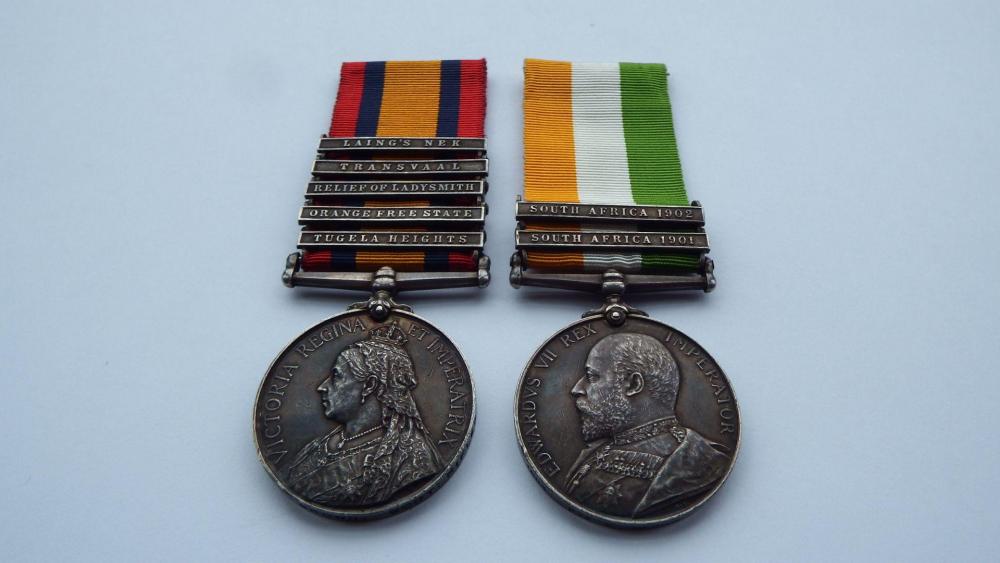

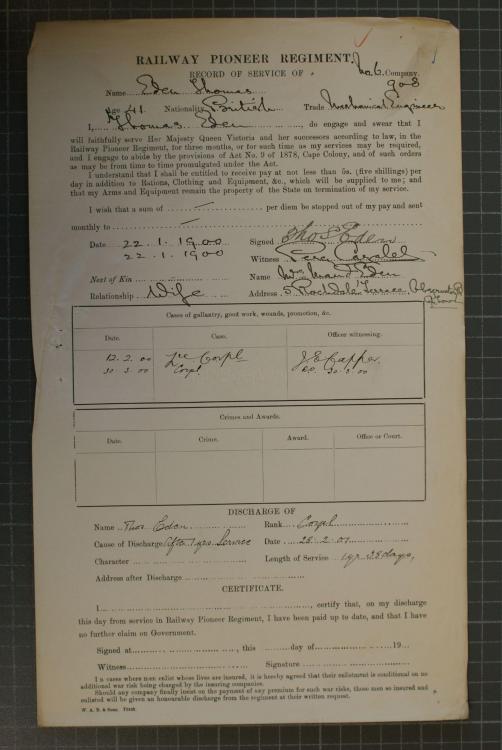
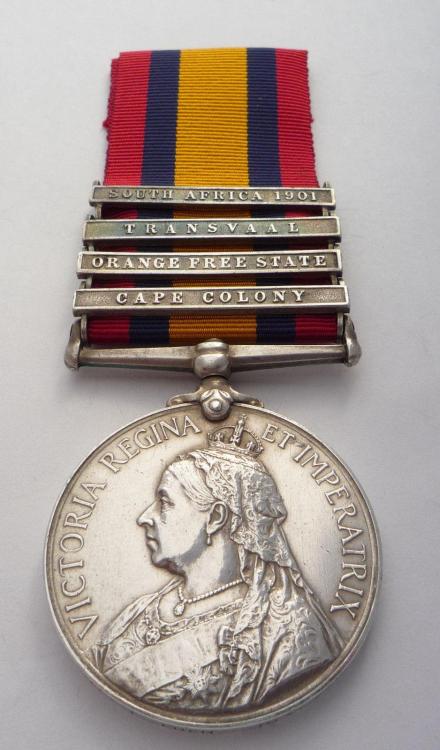
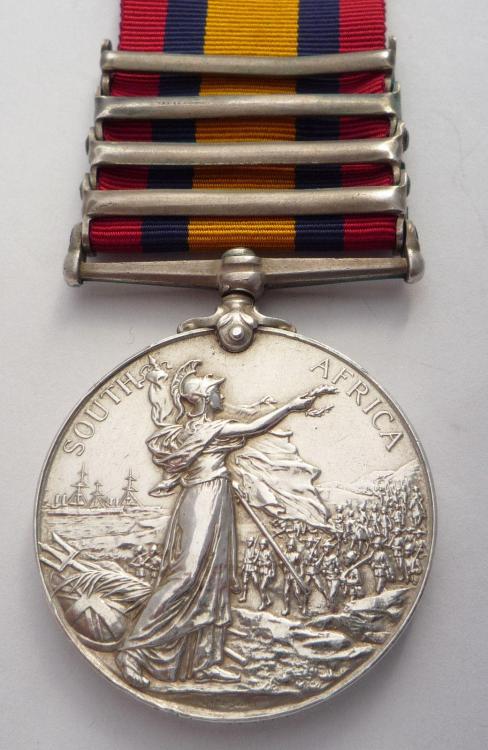
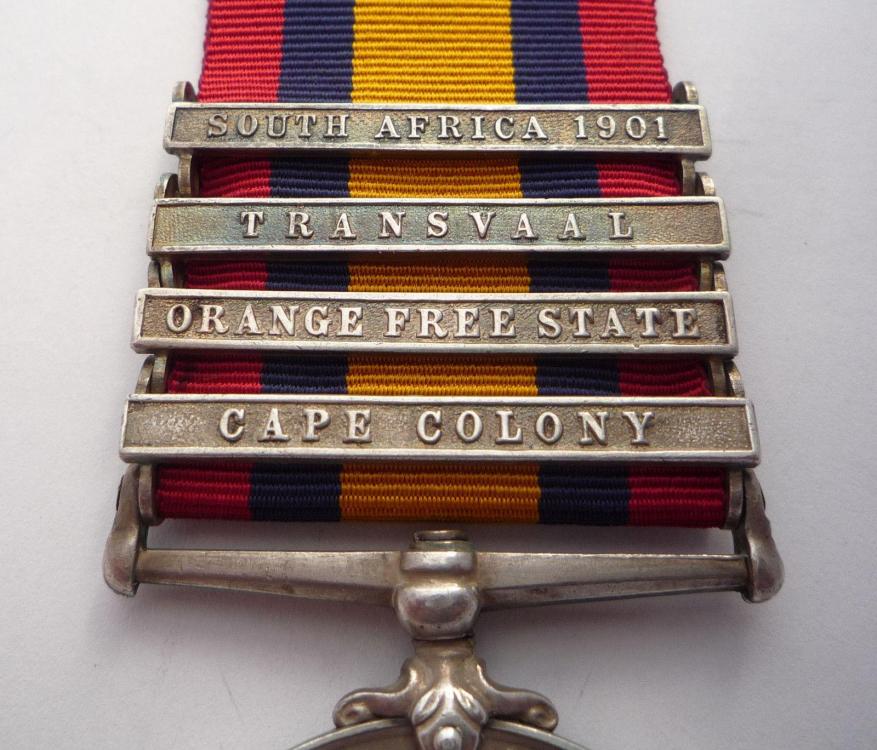
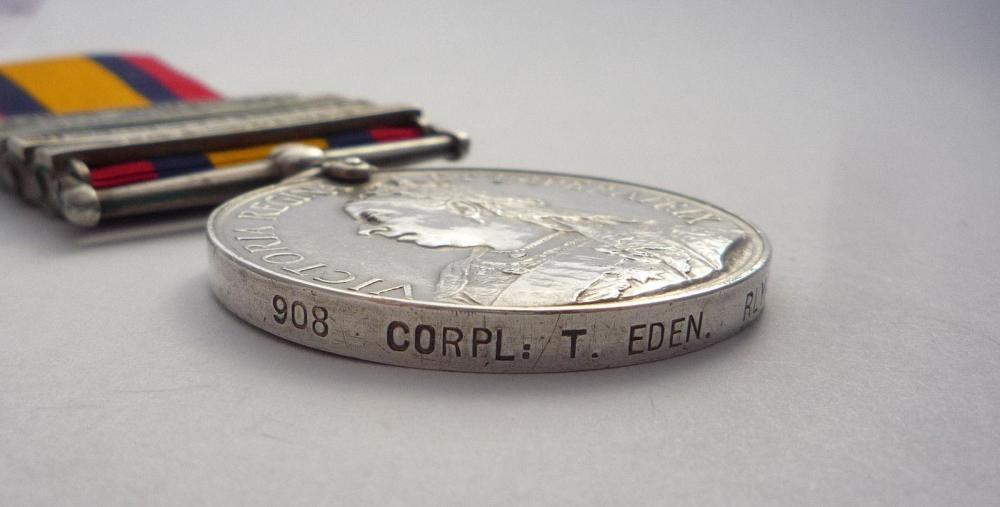
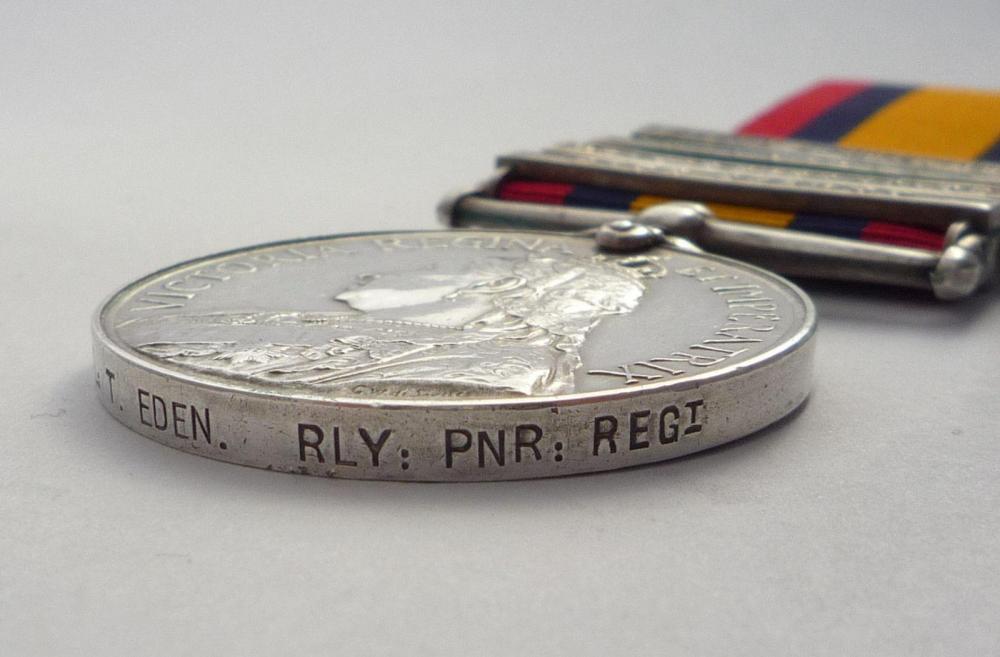
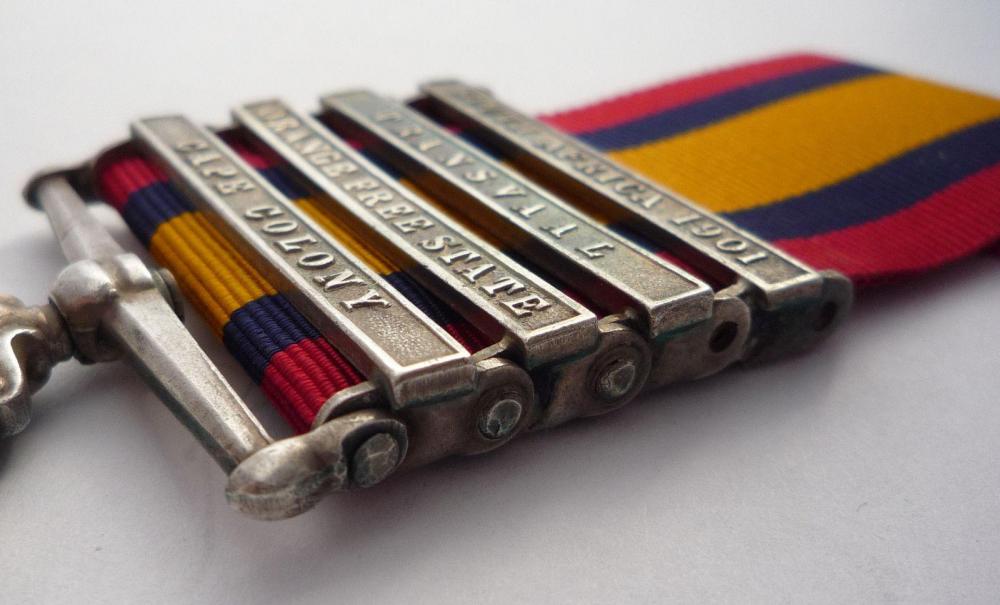
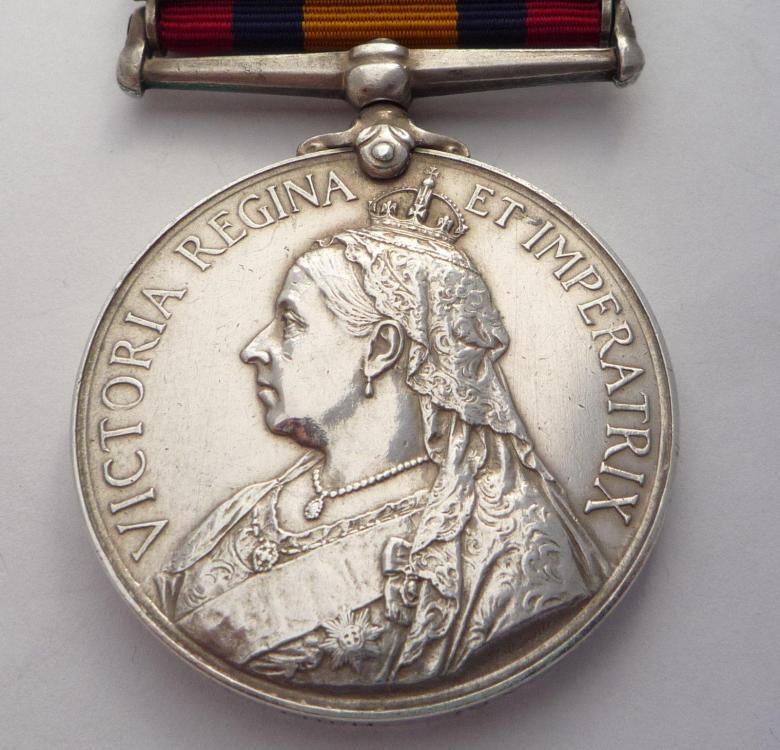
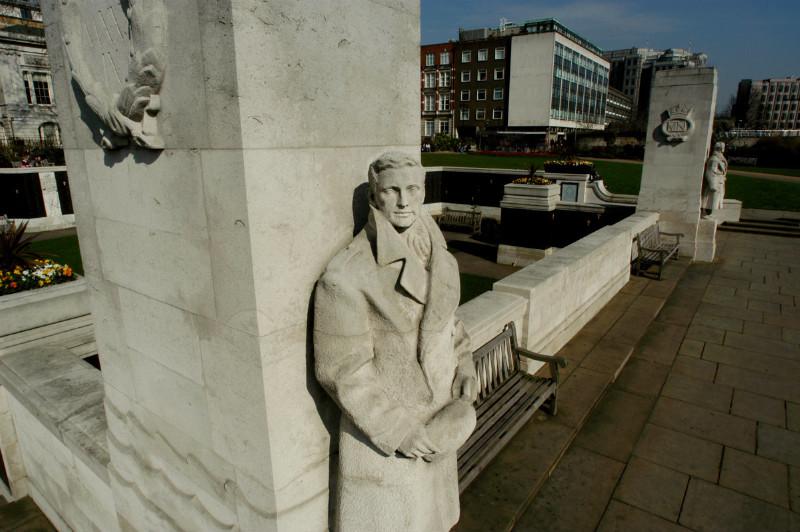
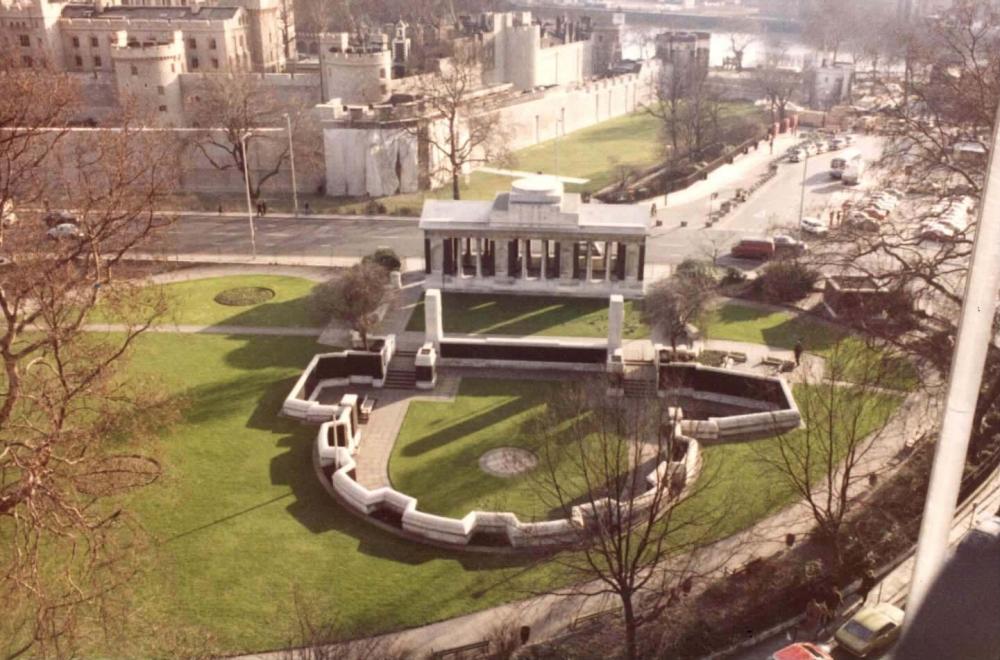

.thumb.jpg.71a1d3b8c5c9acbb35bad48307ae0173.jpg)
